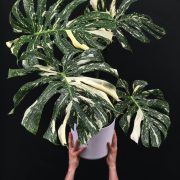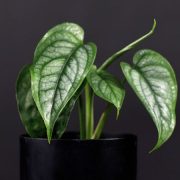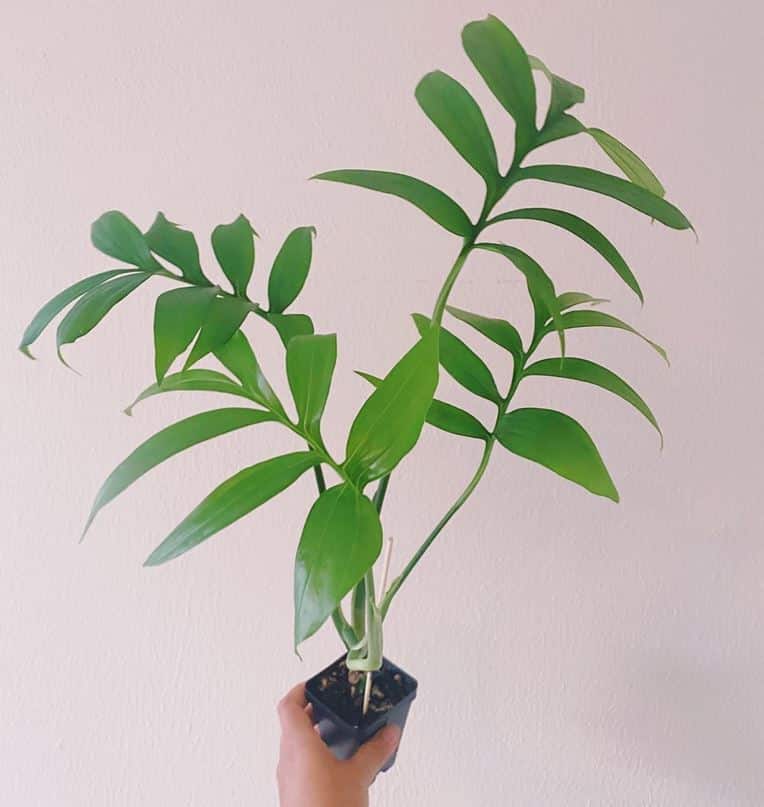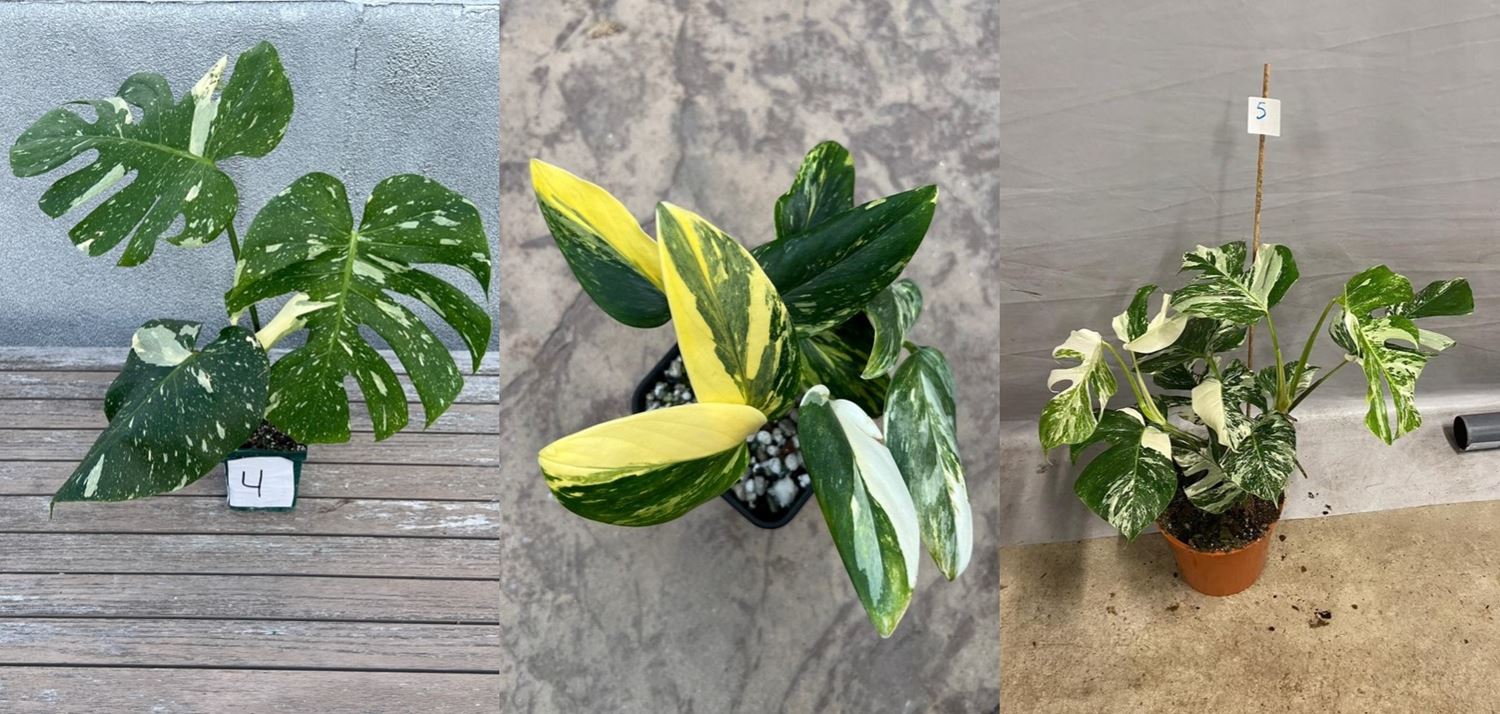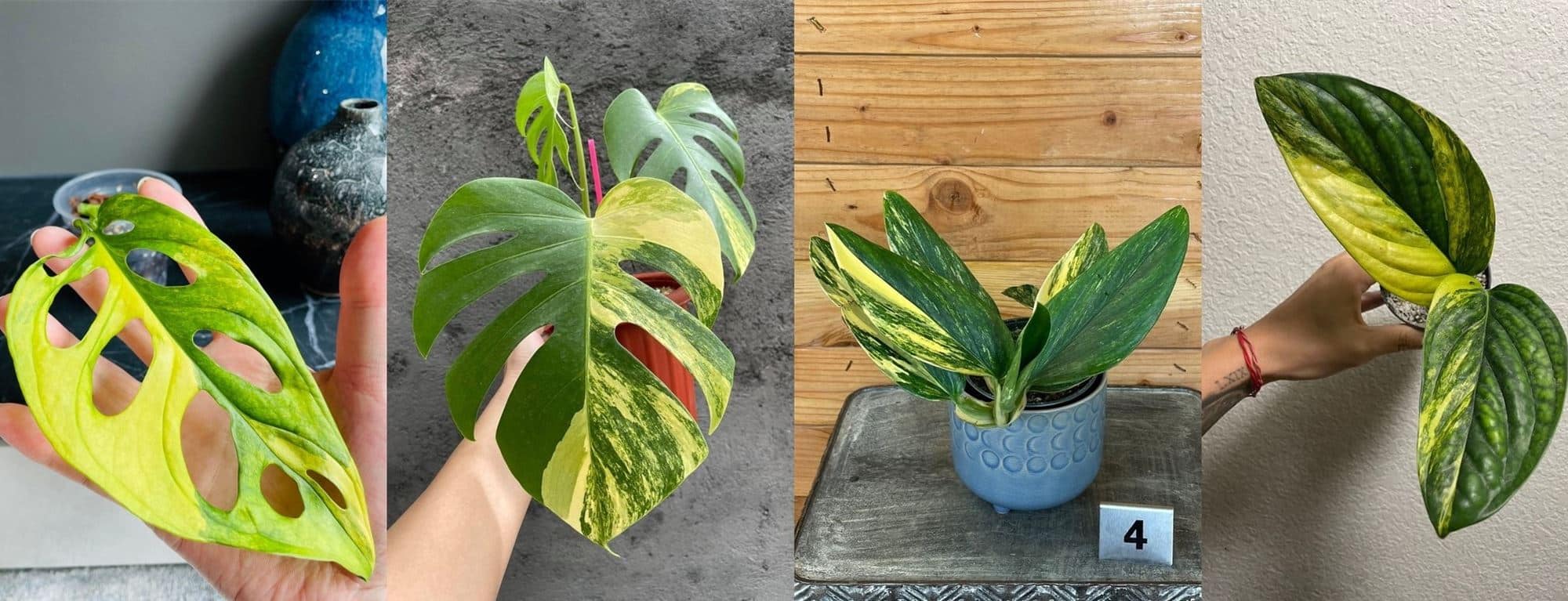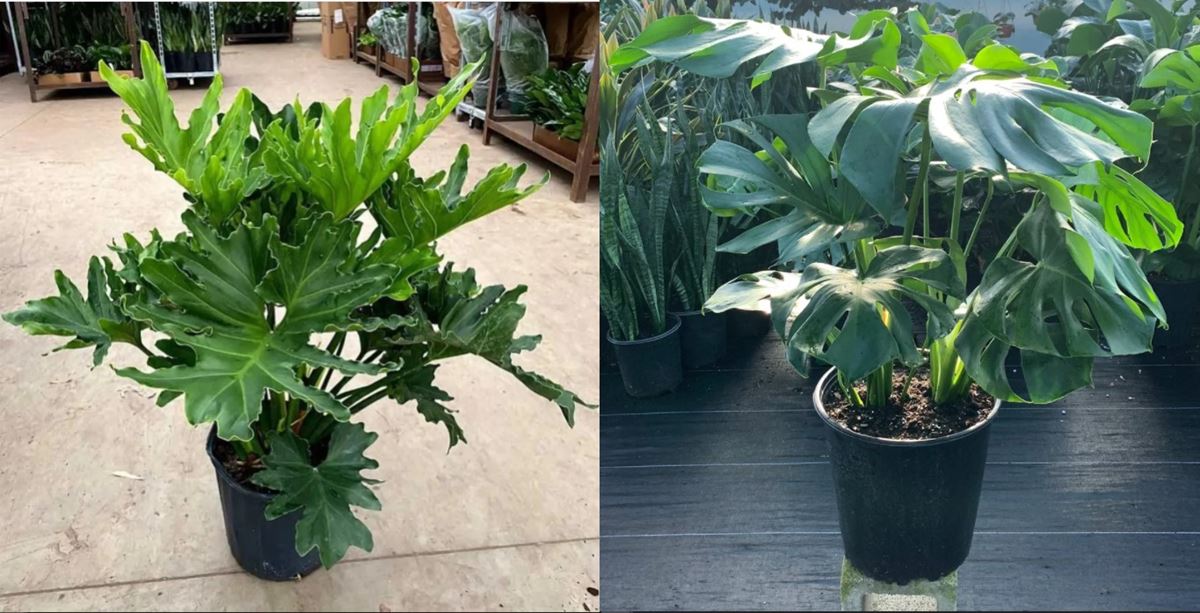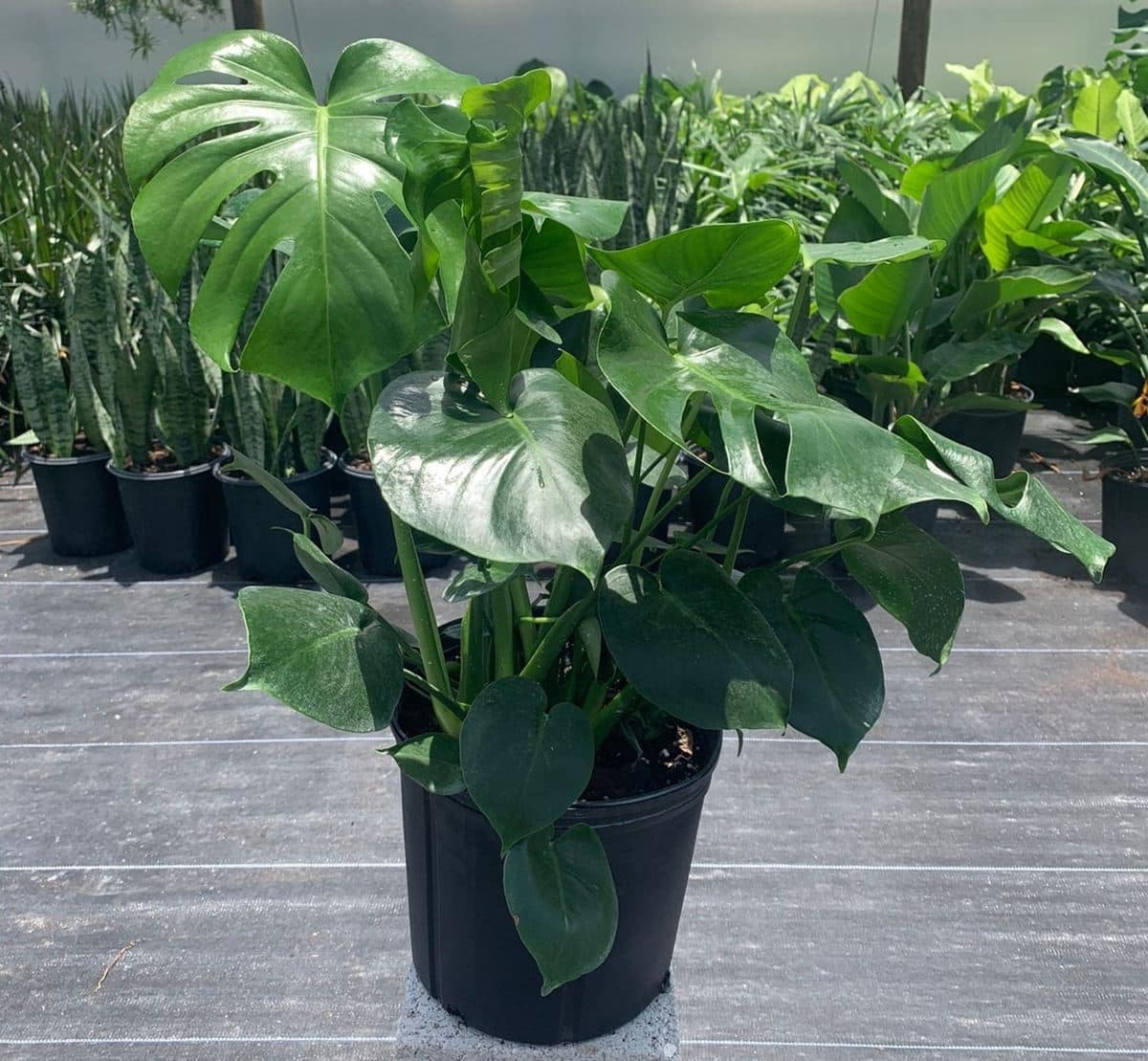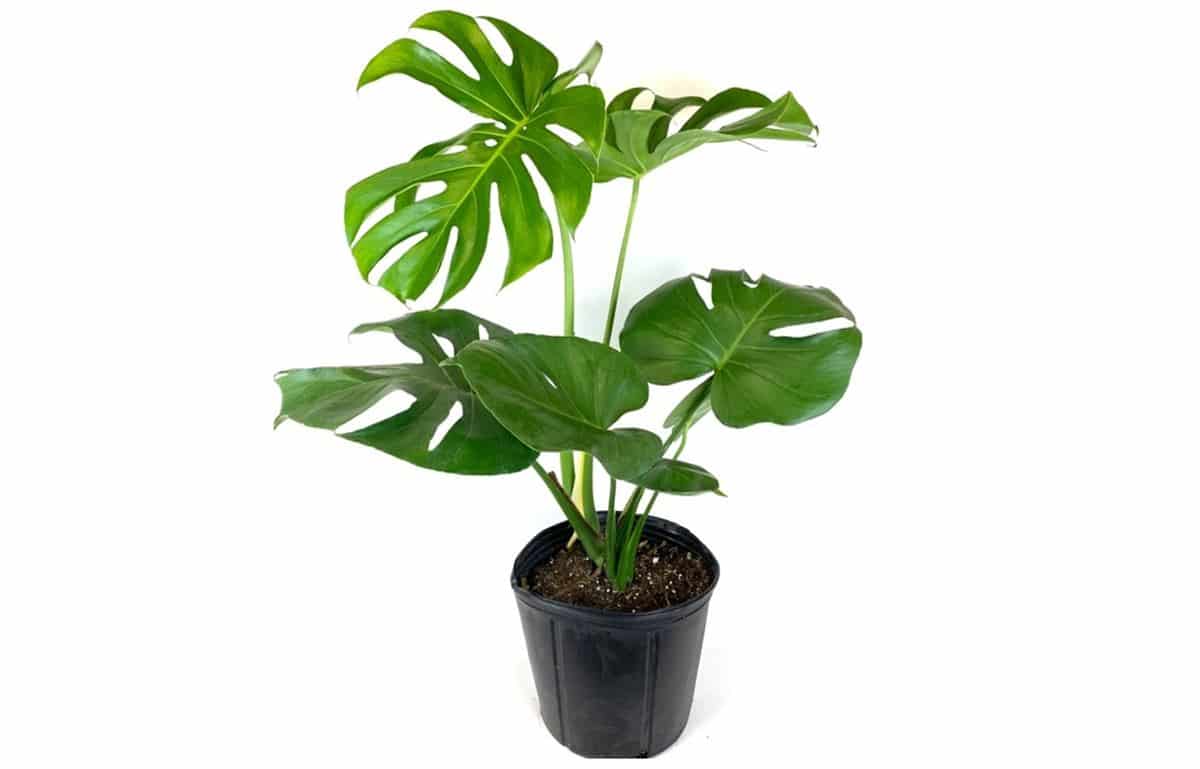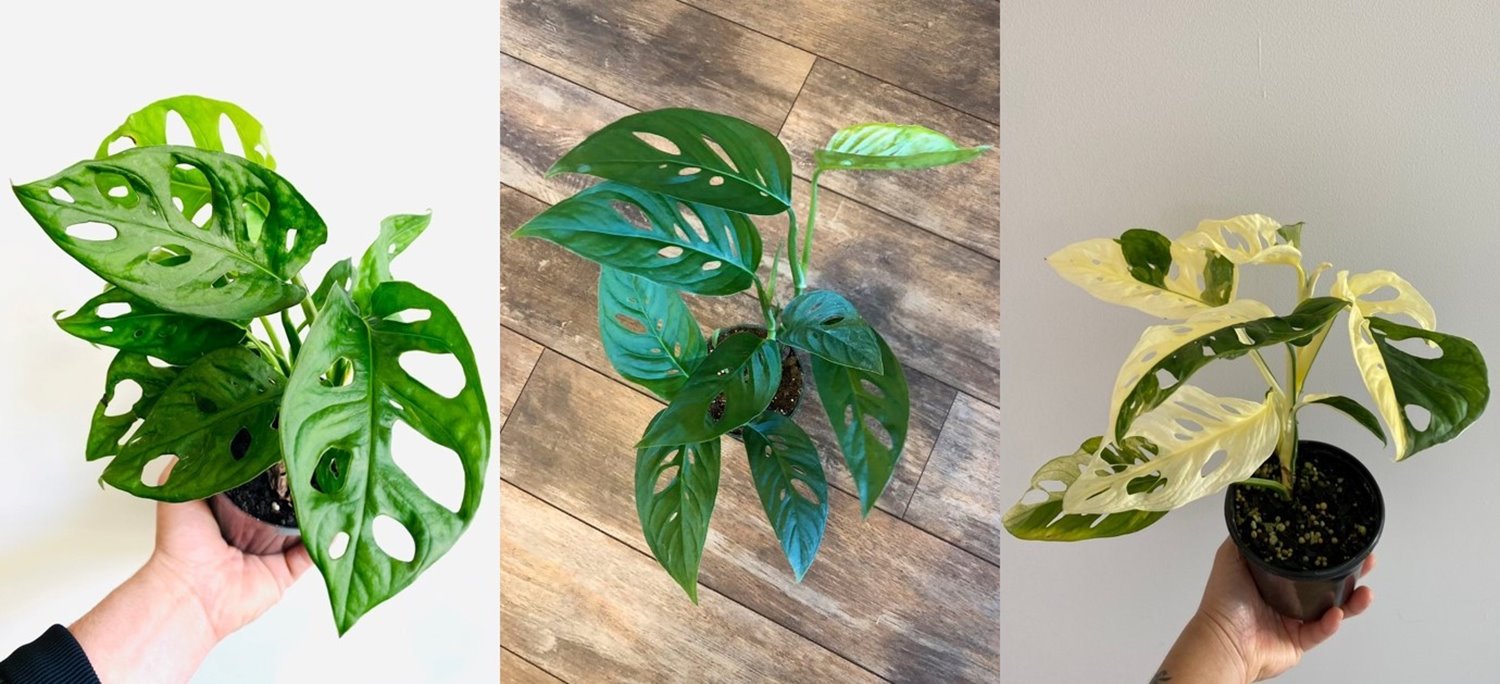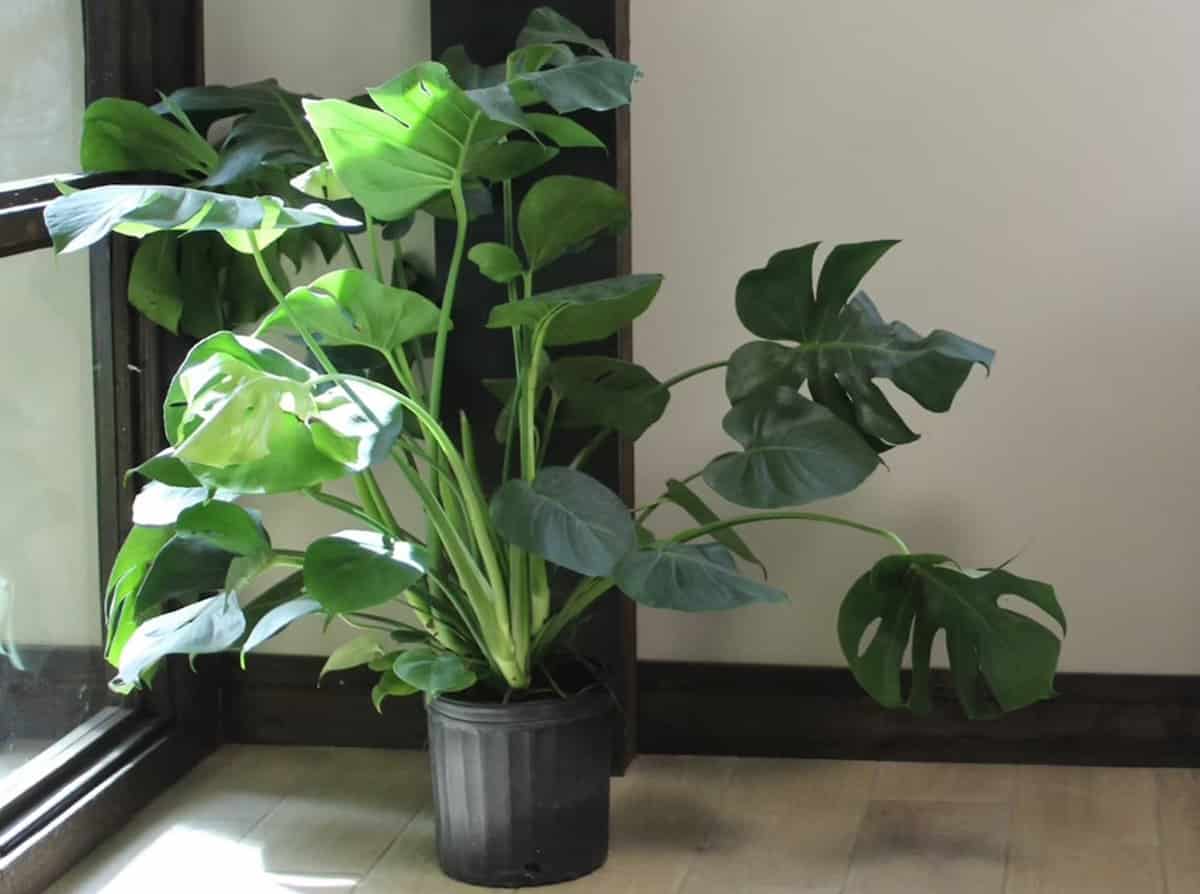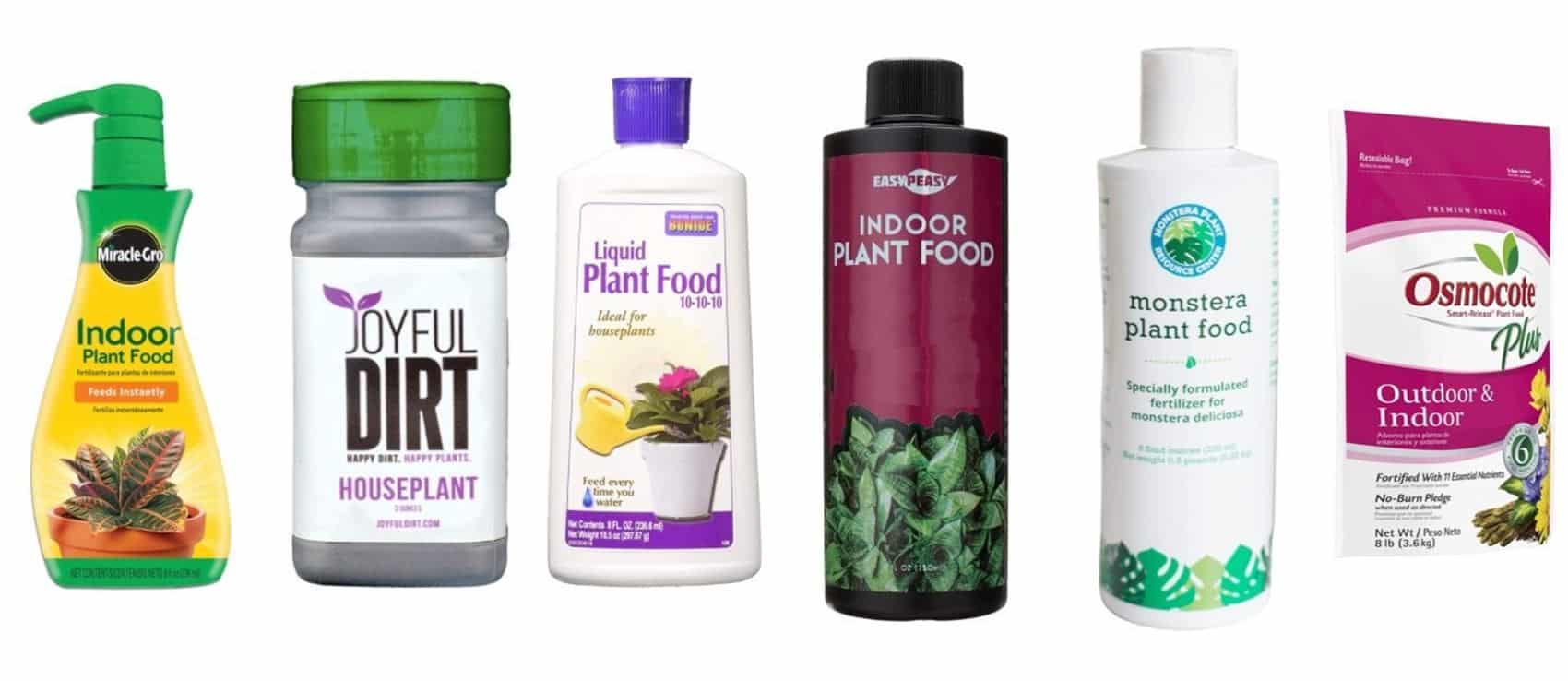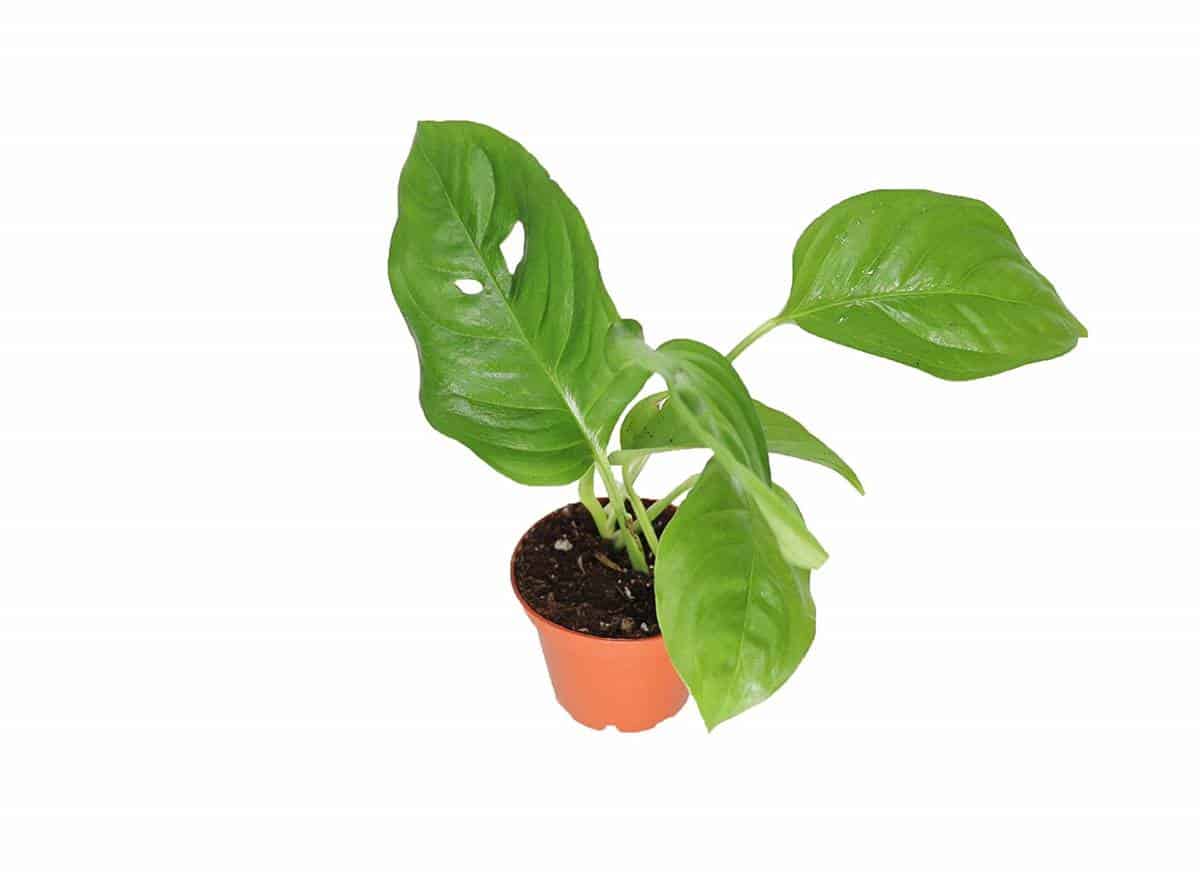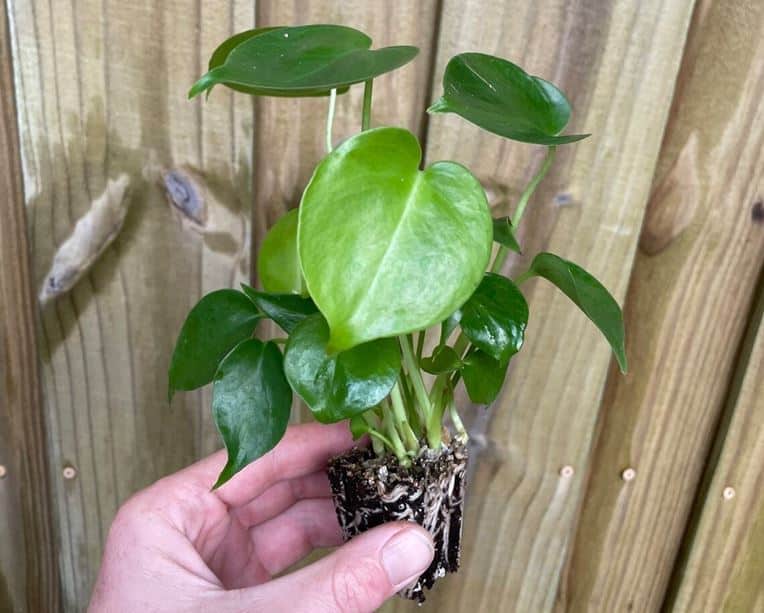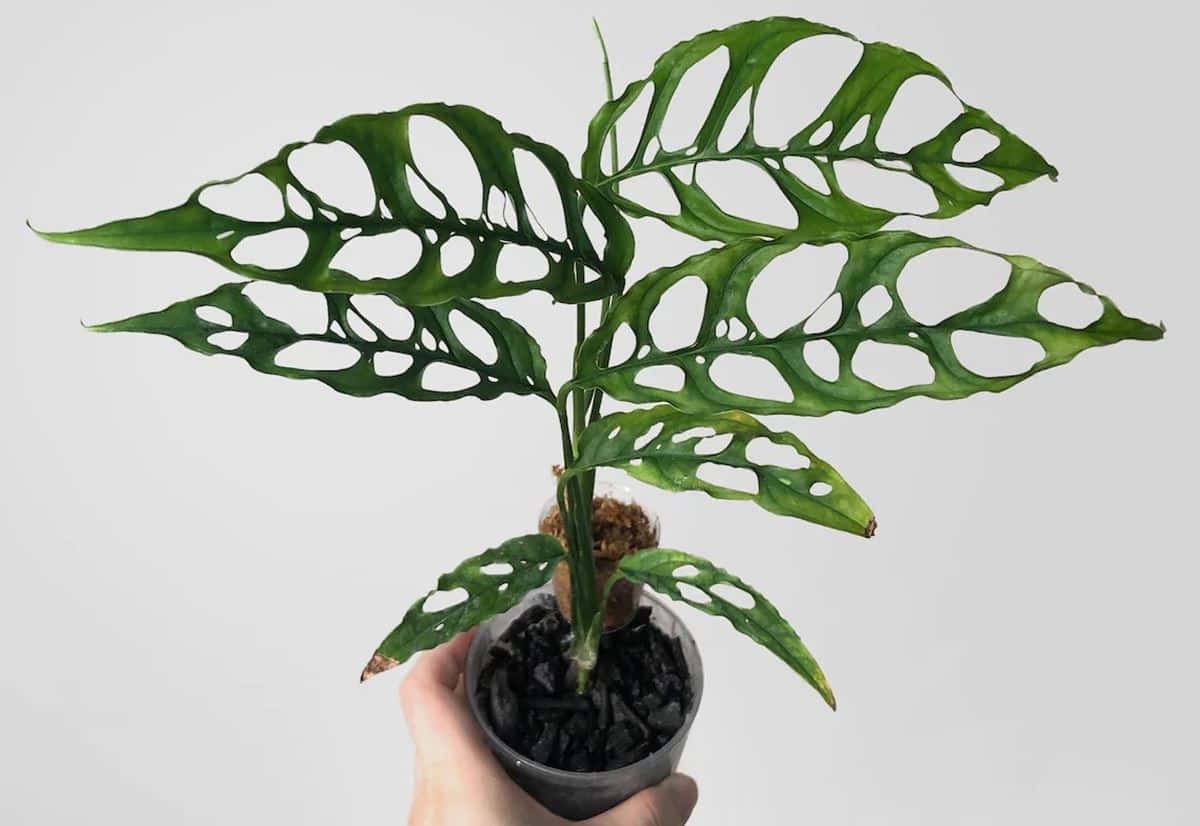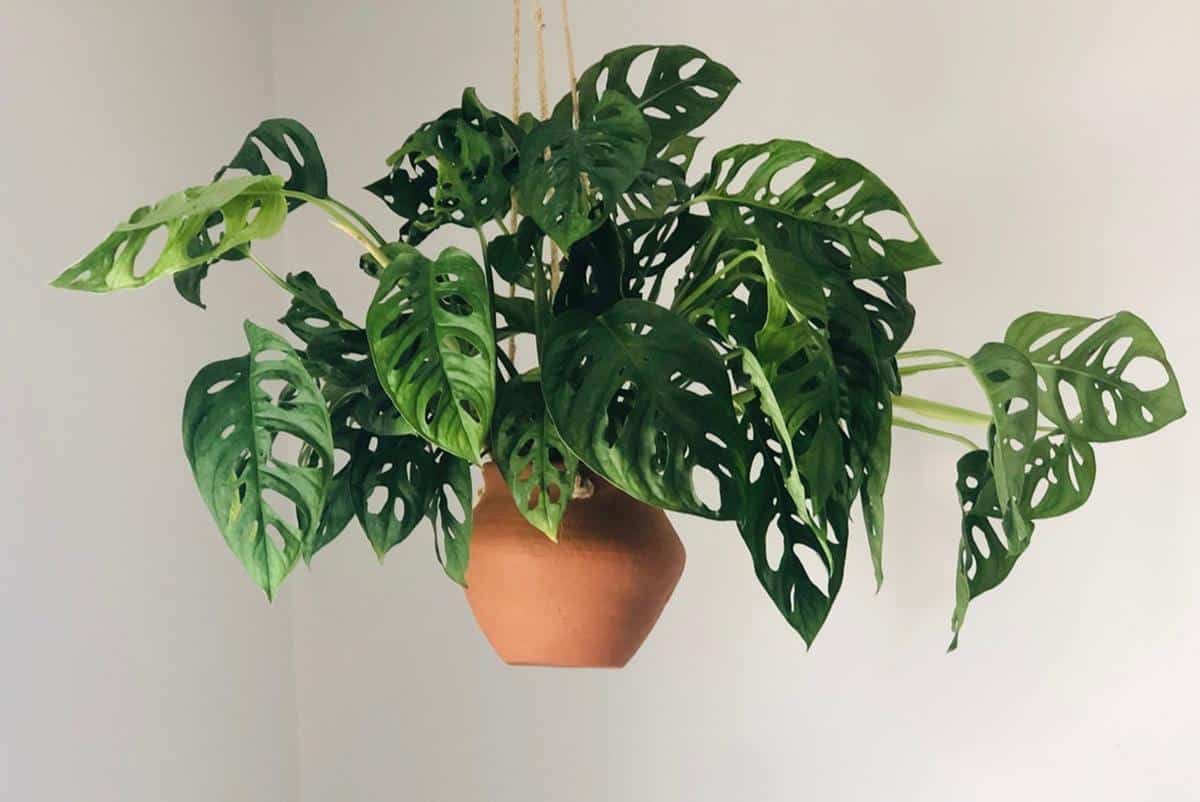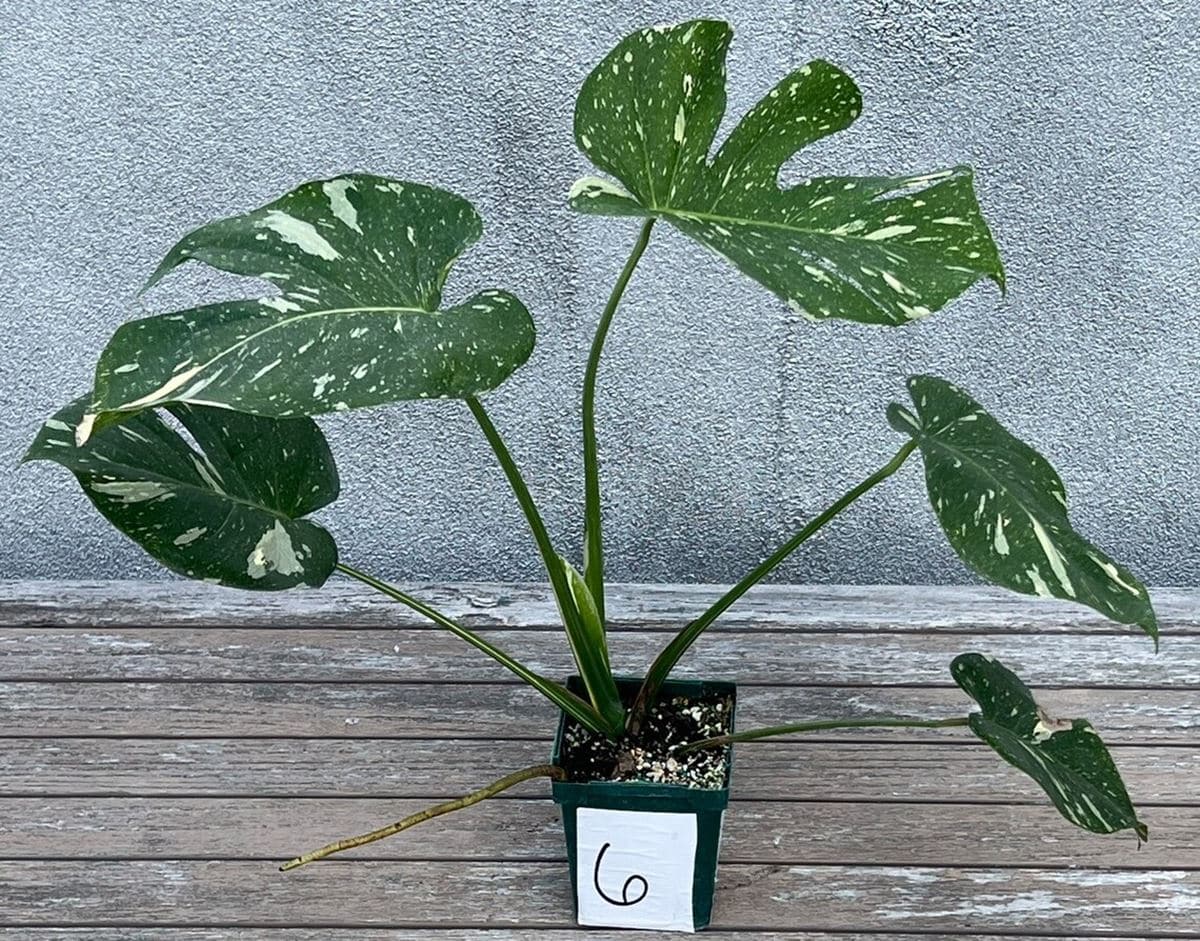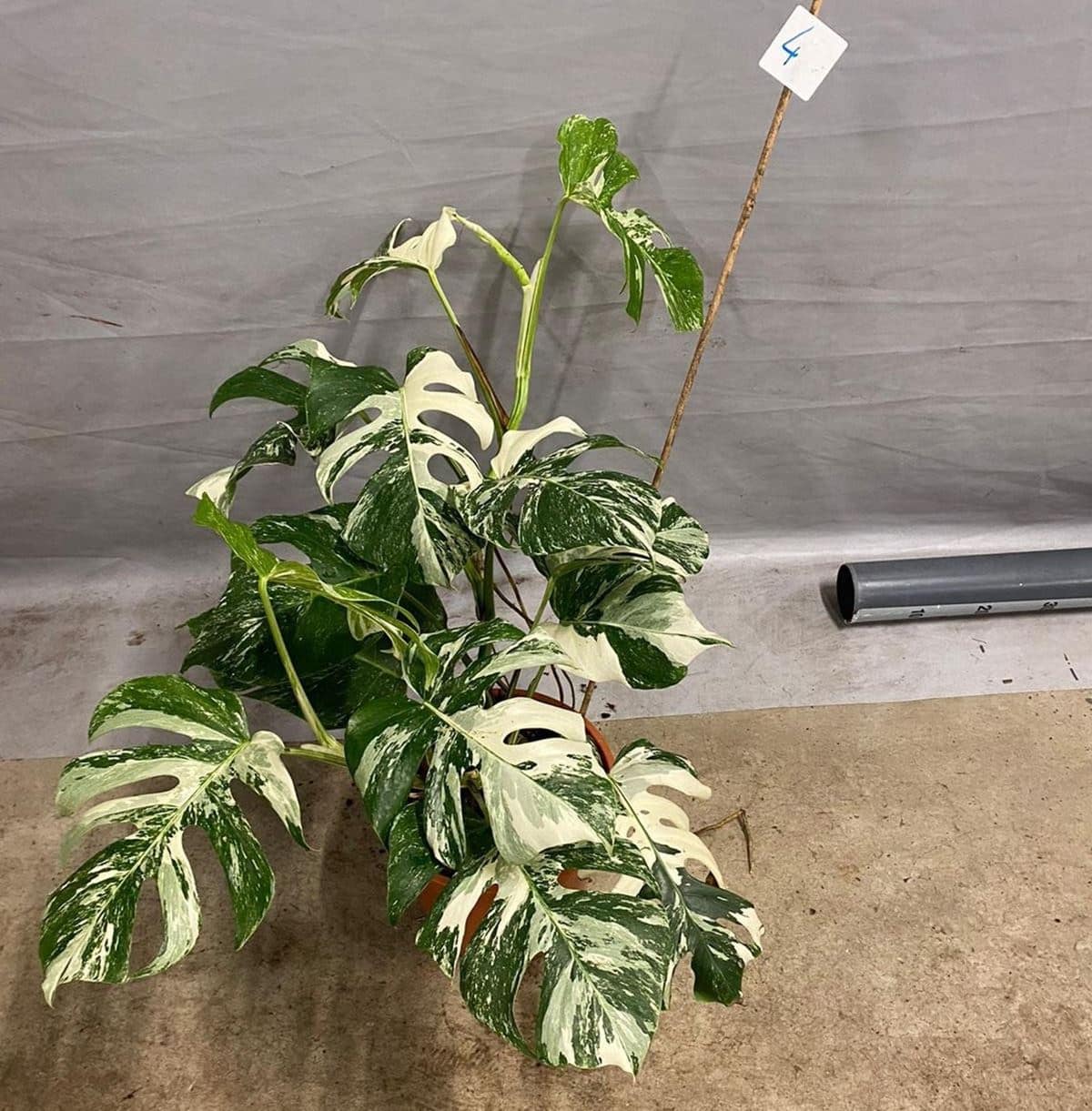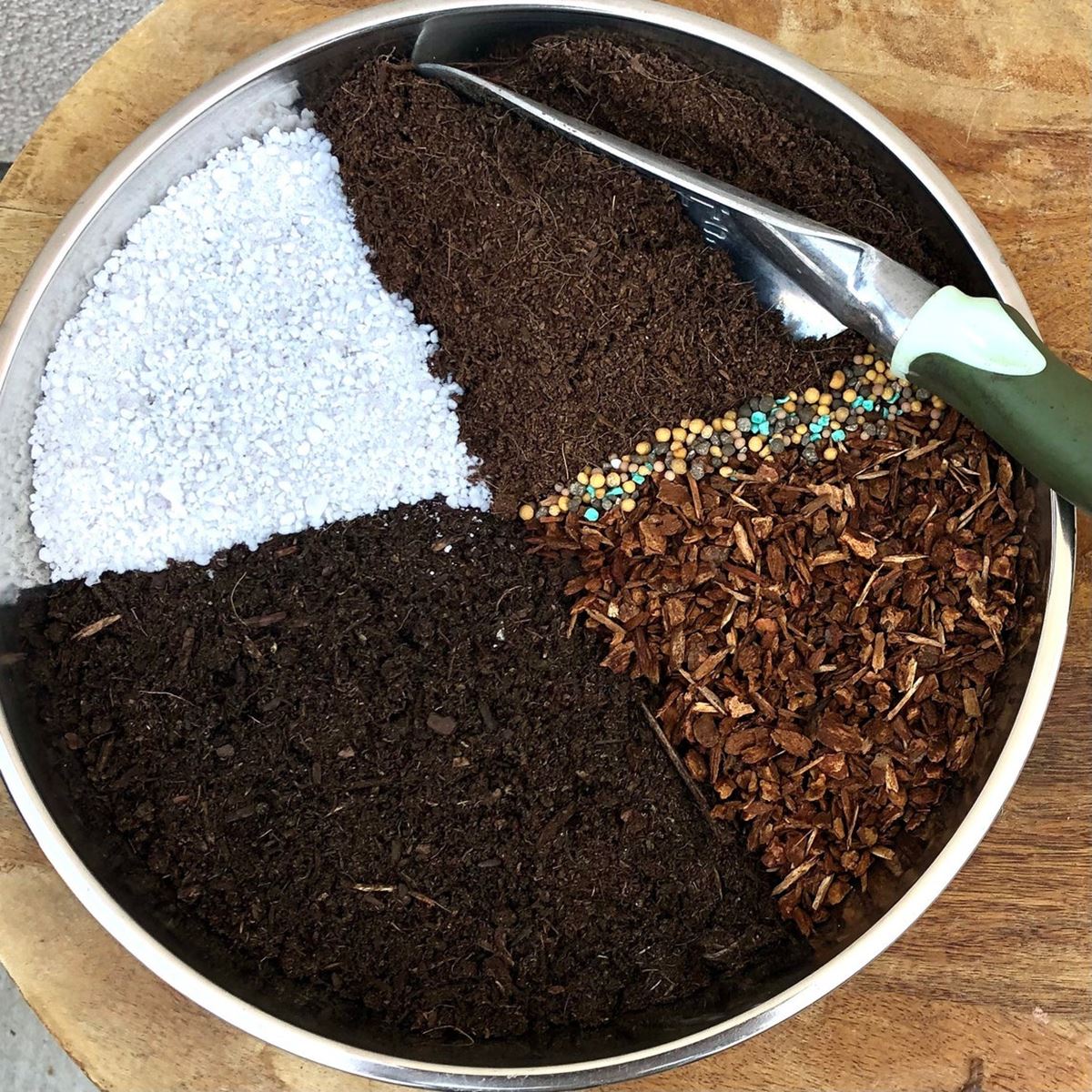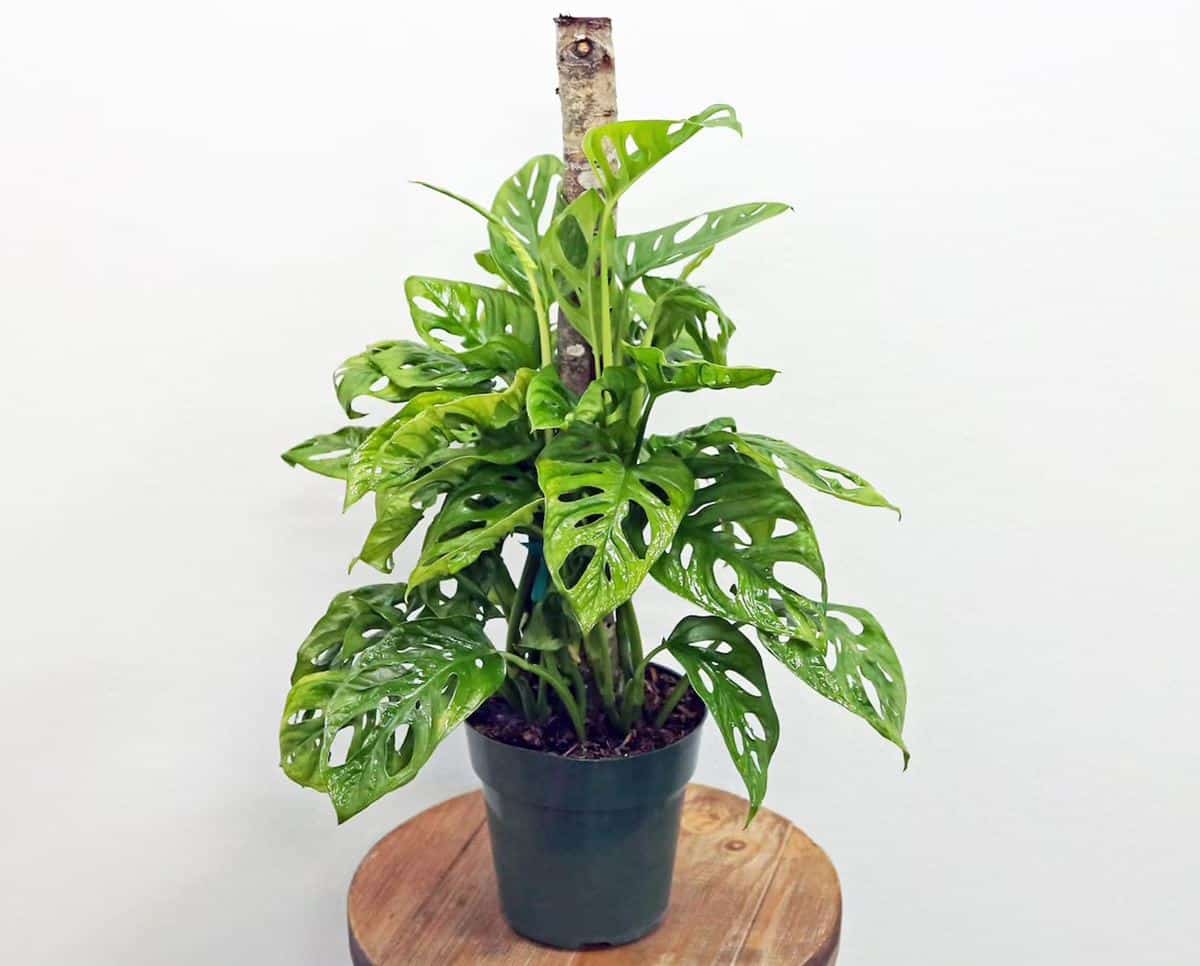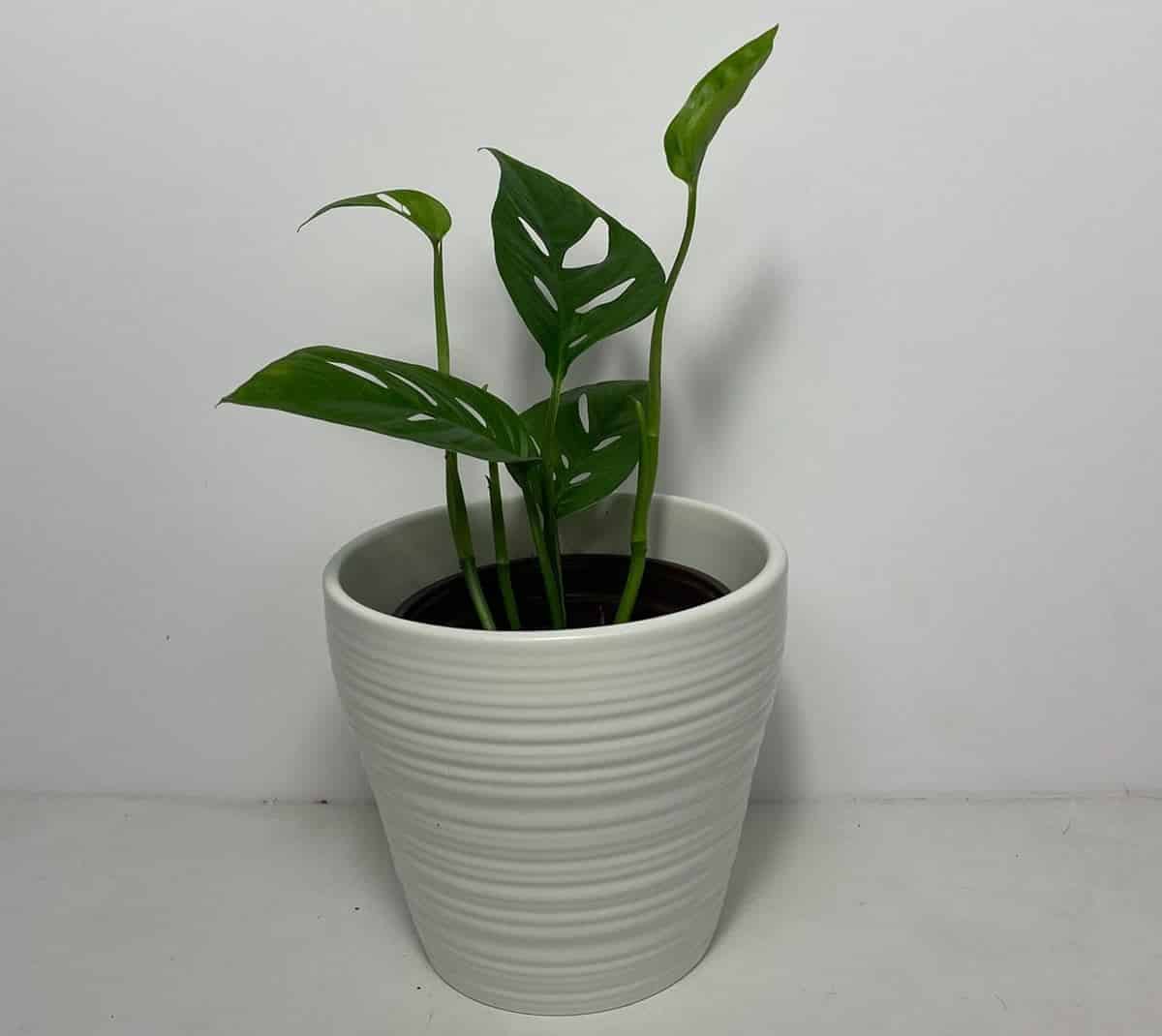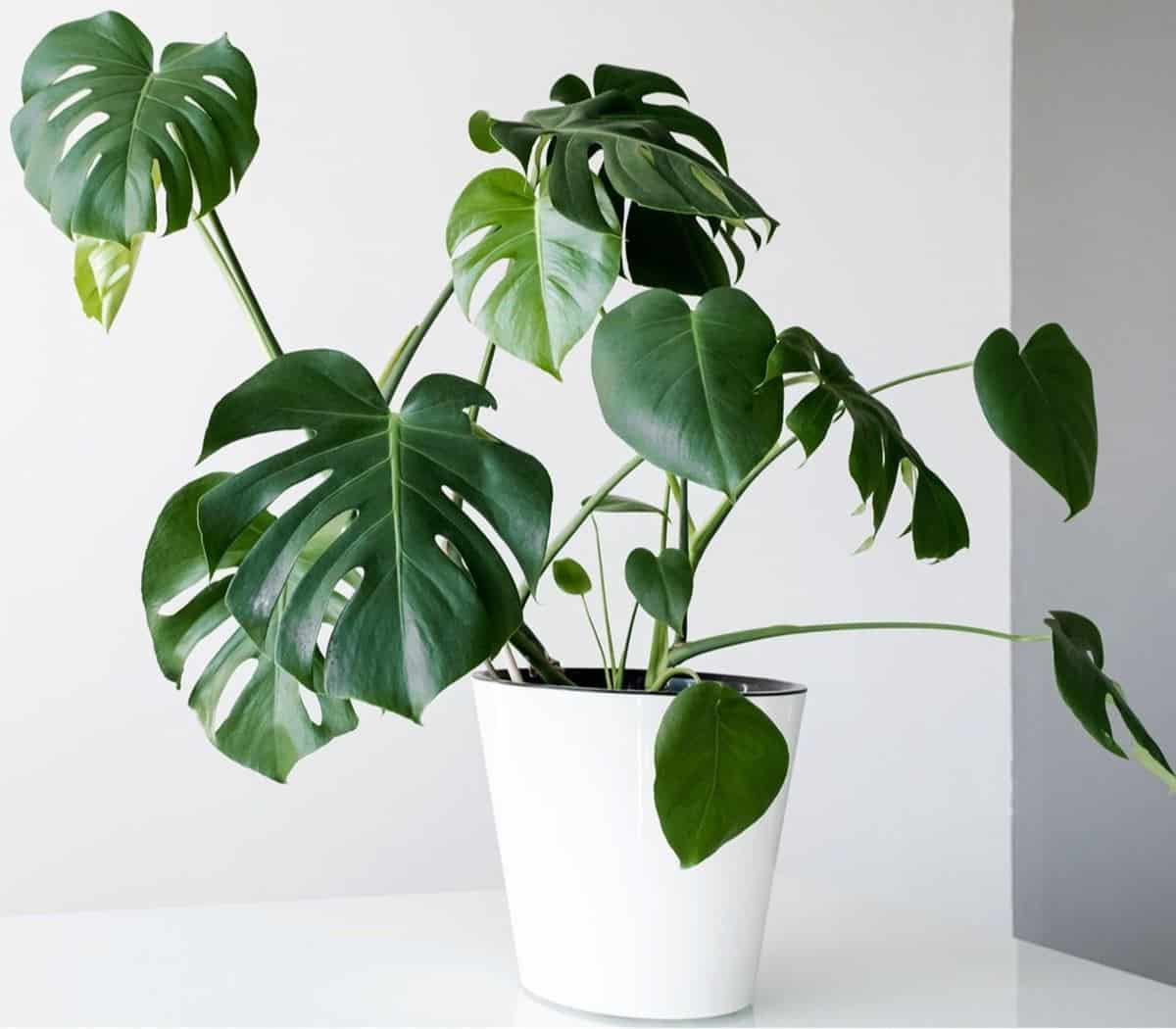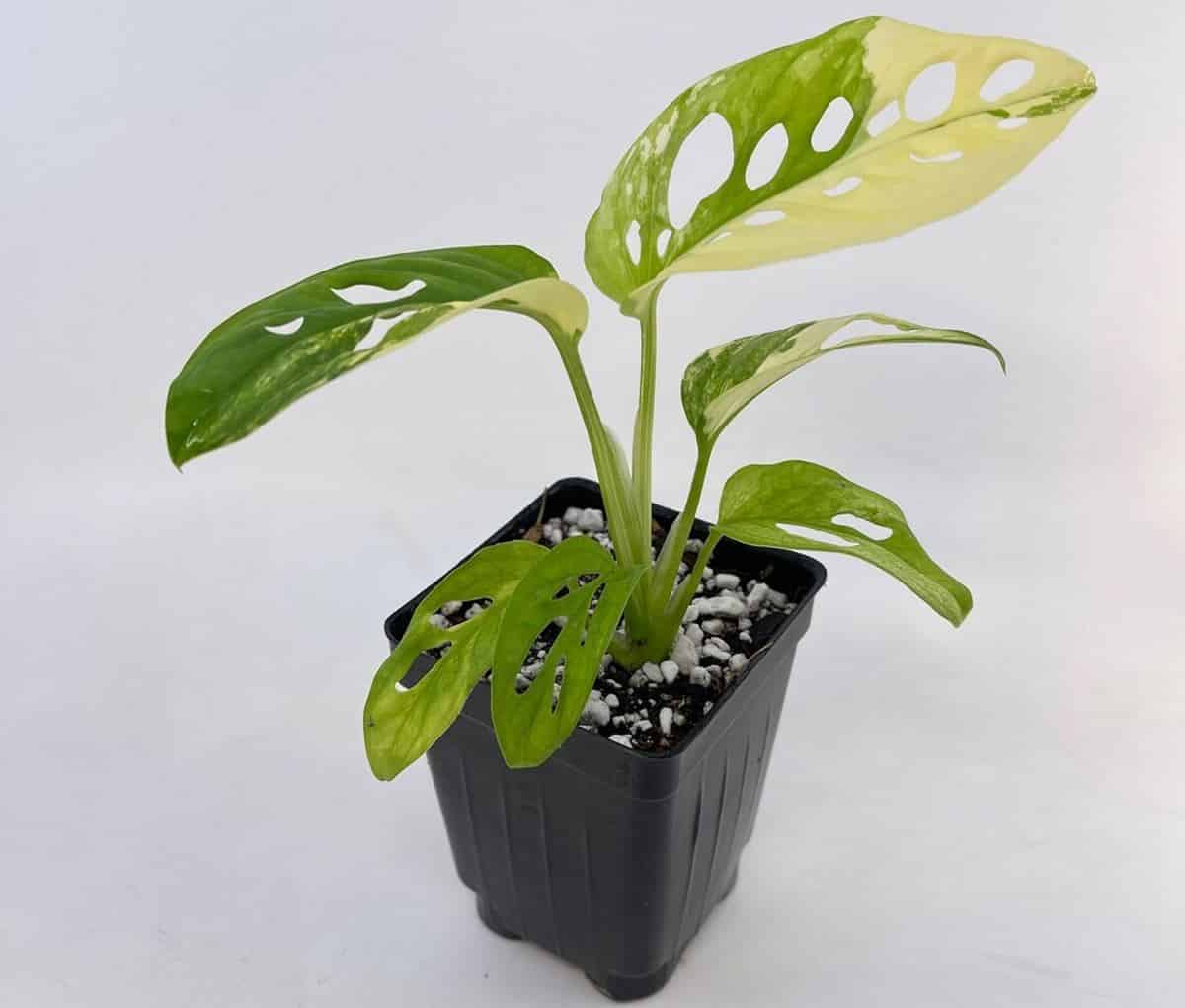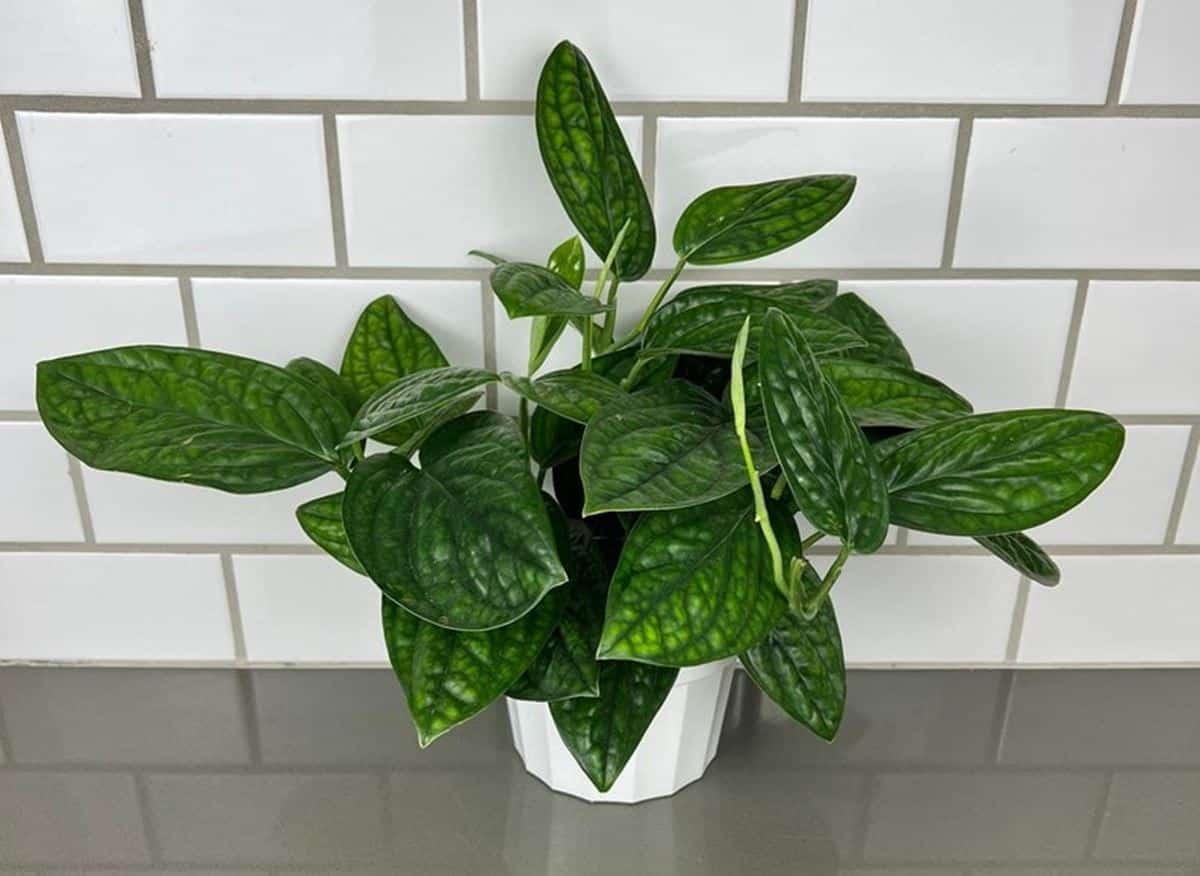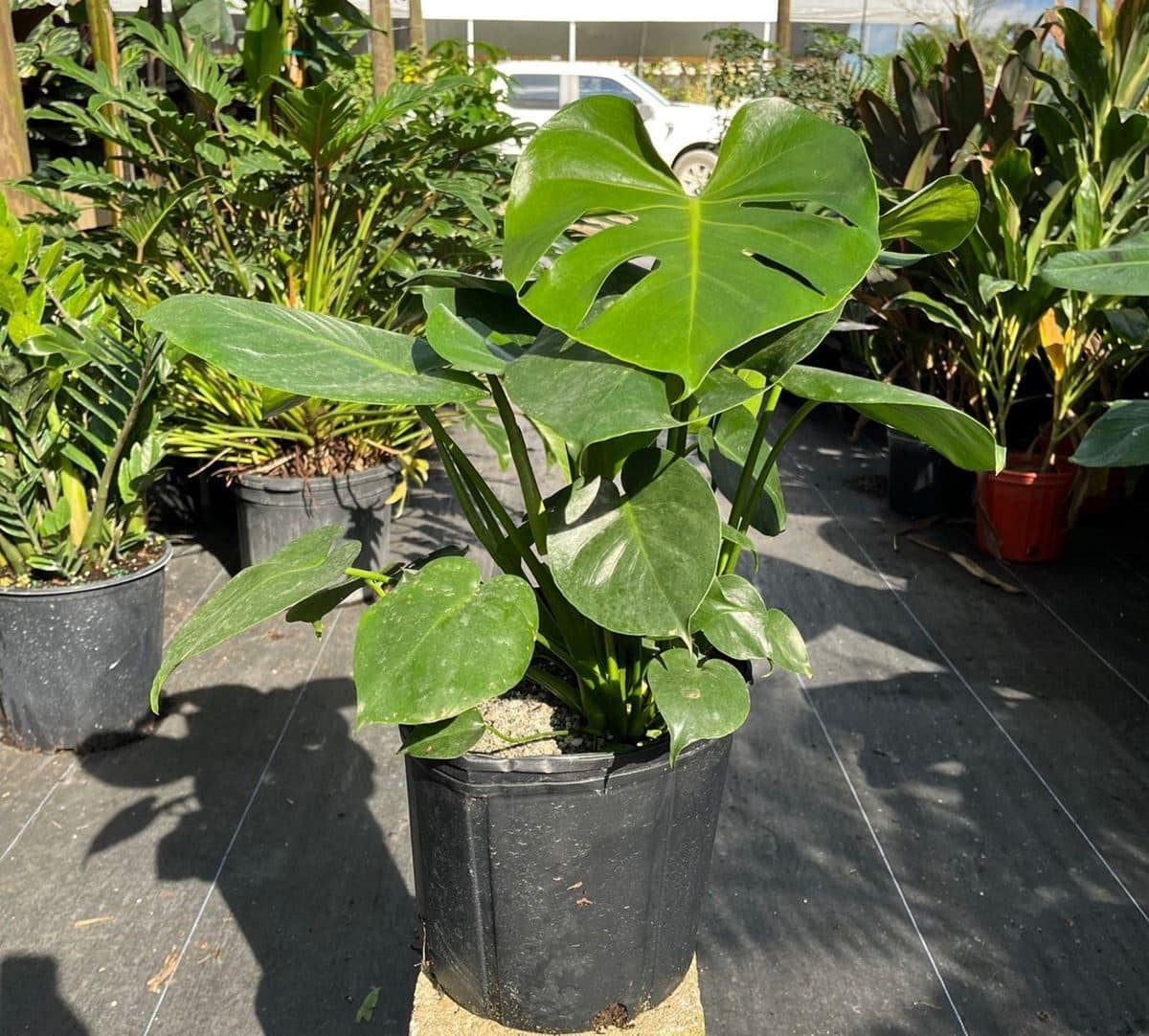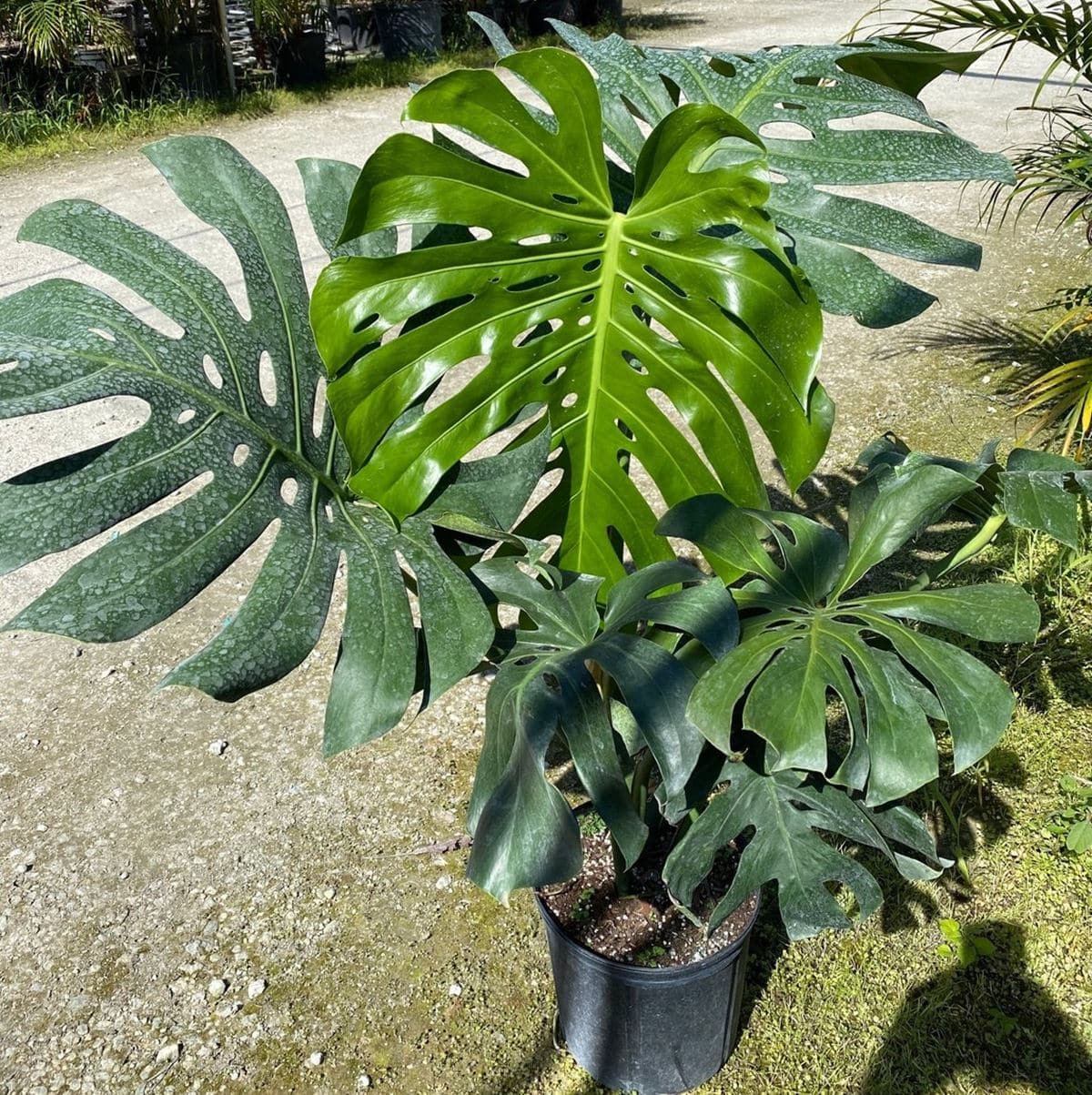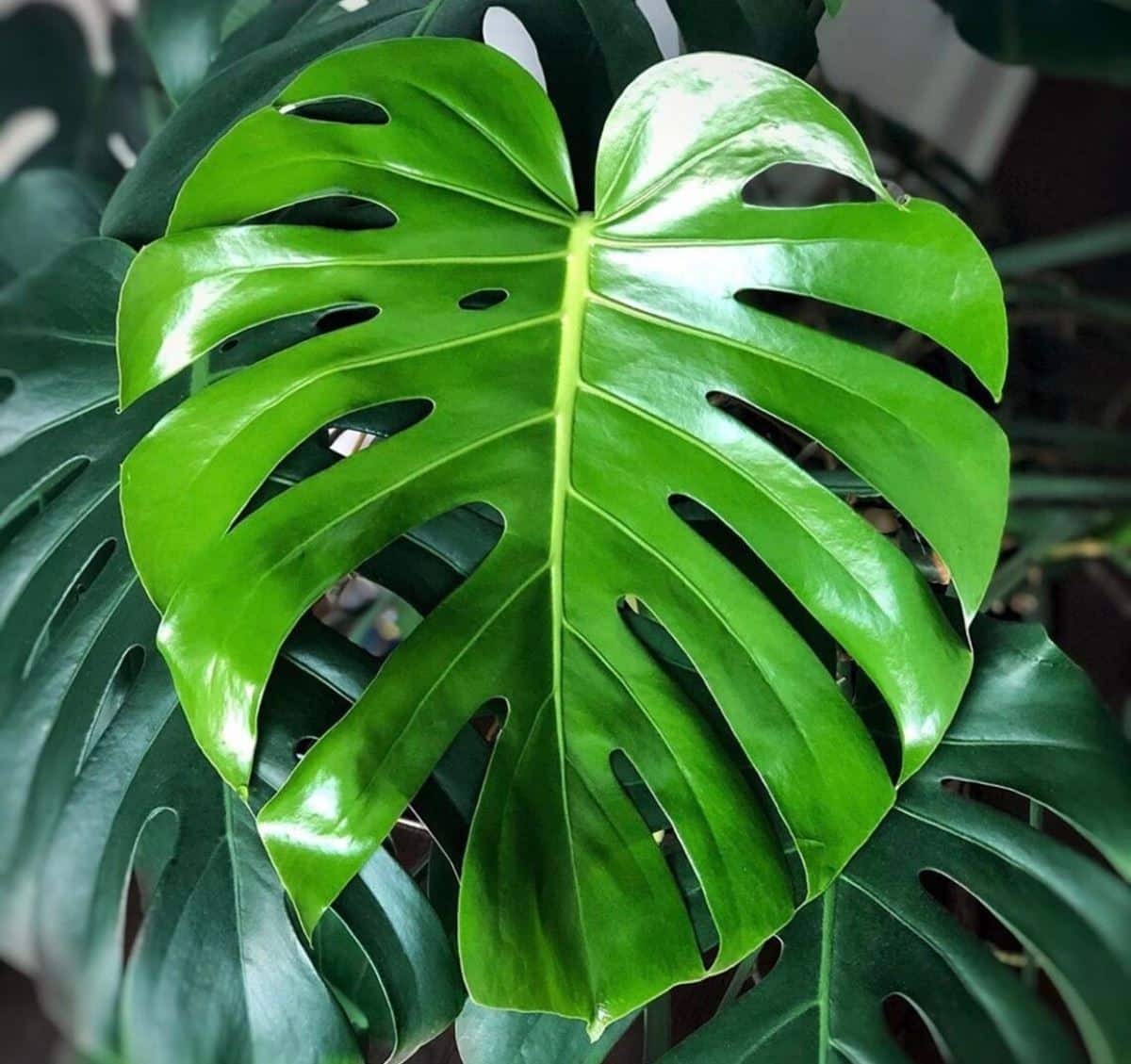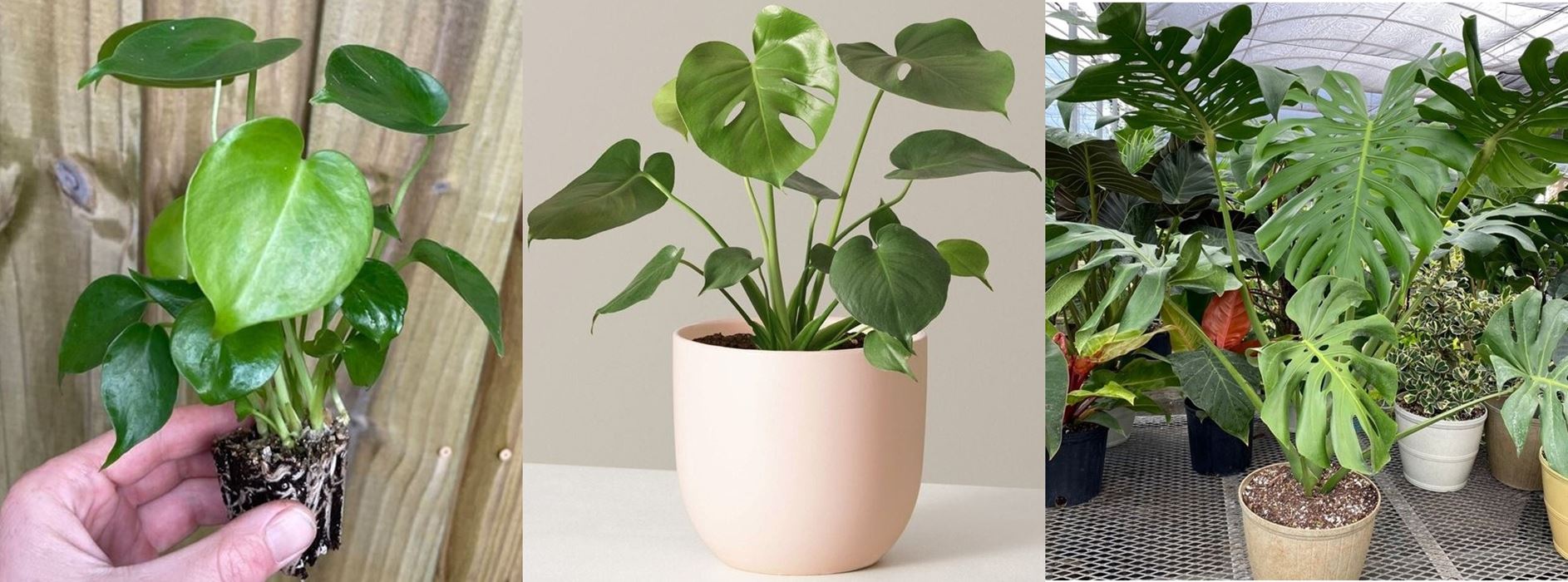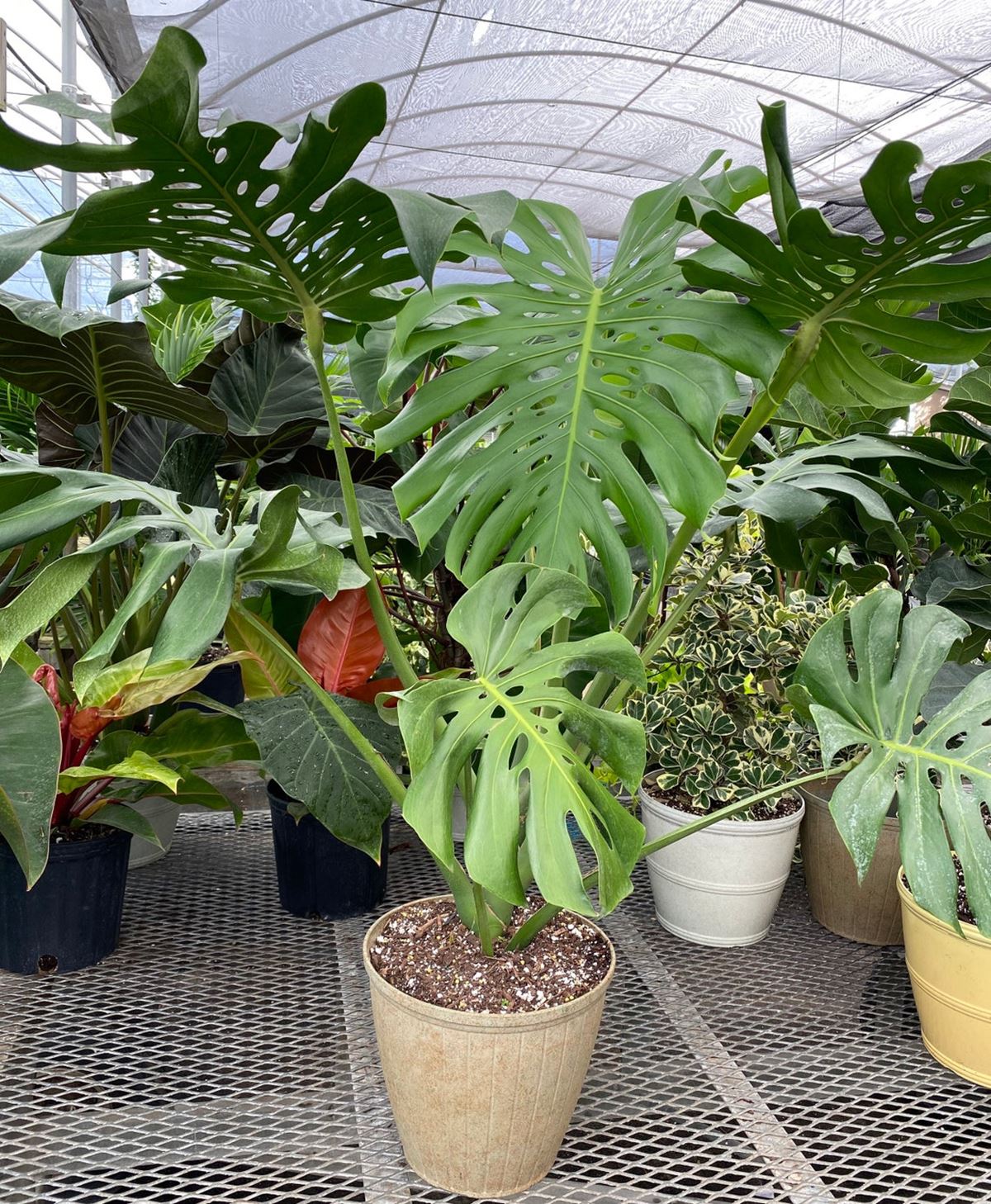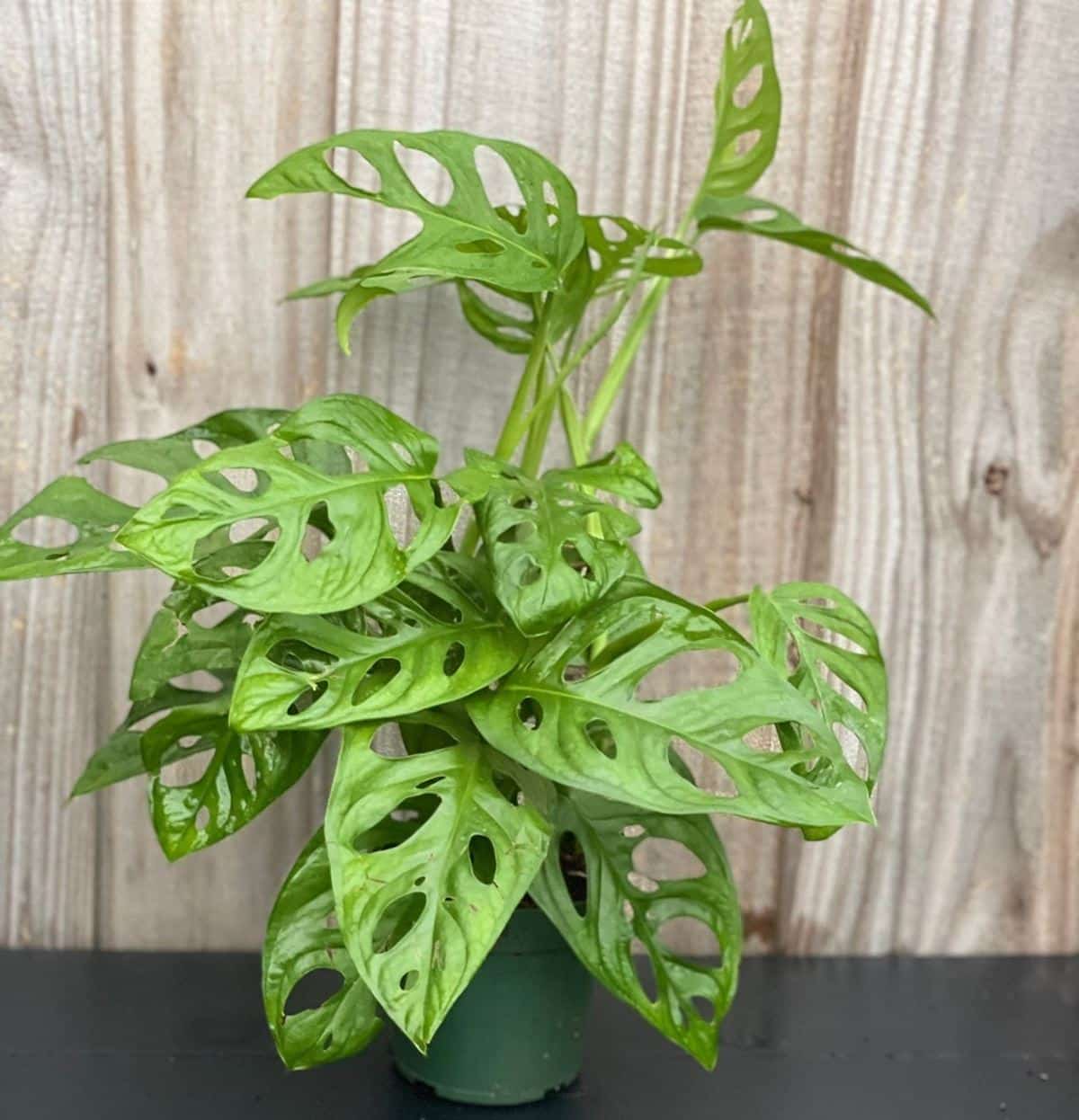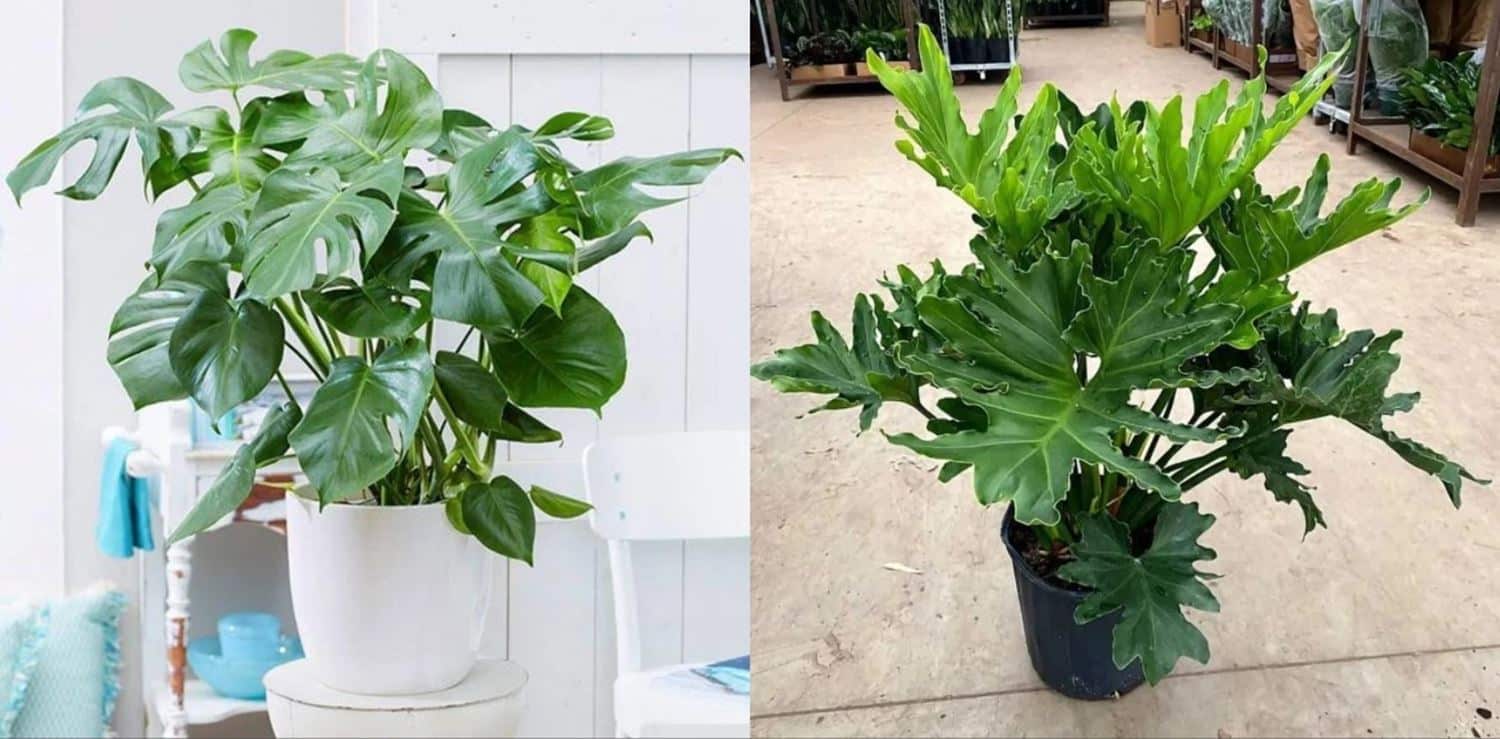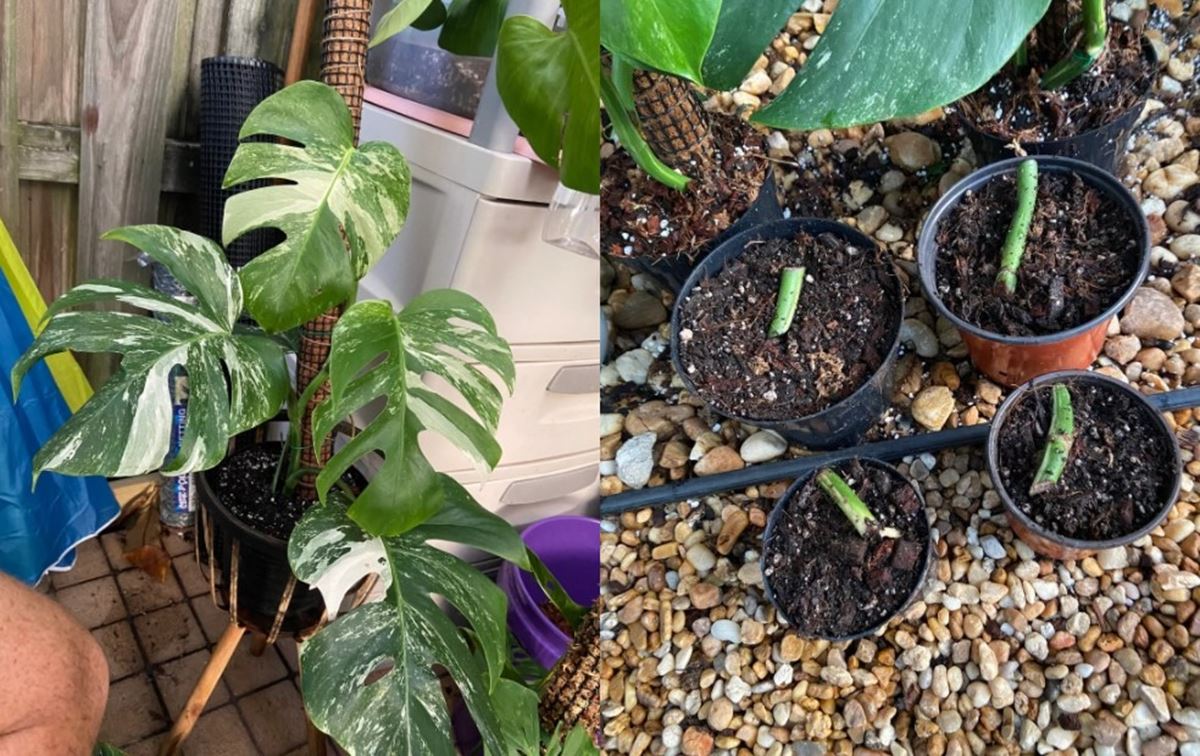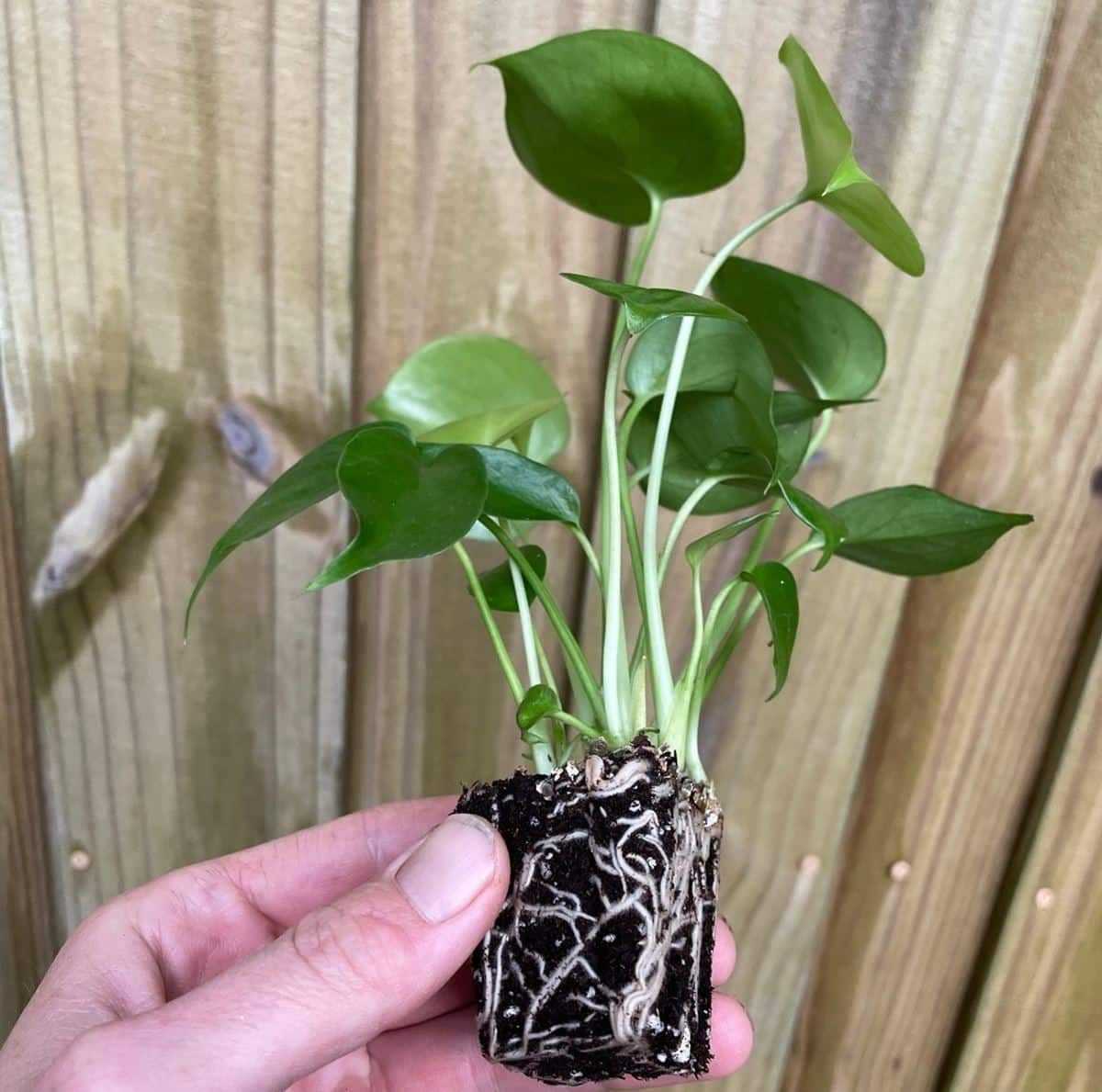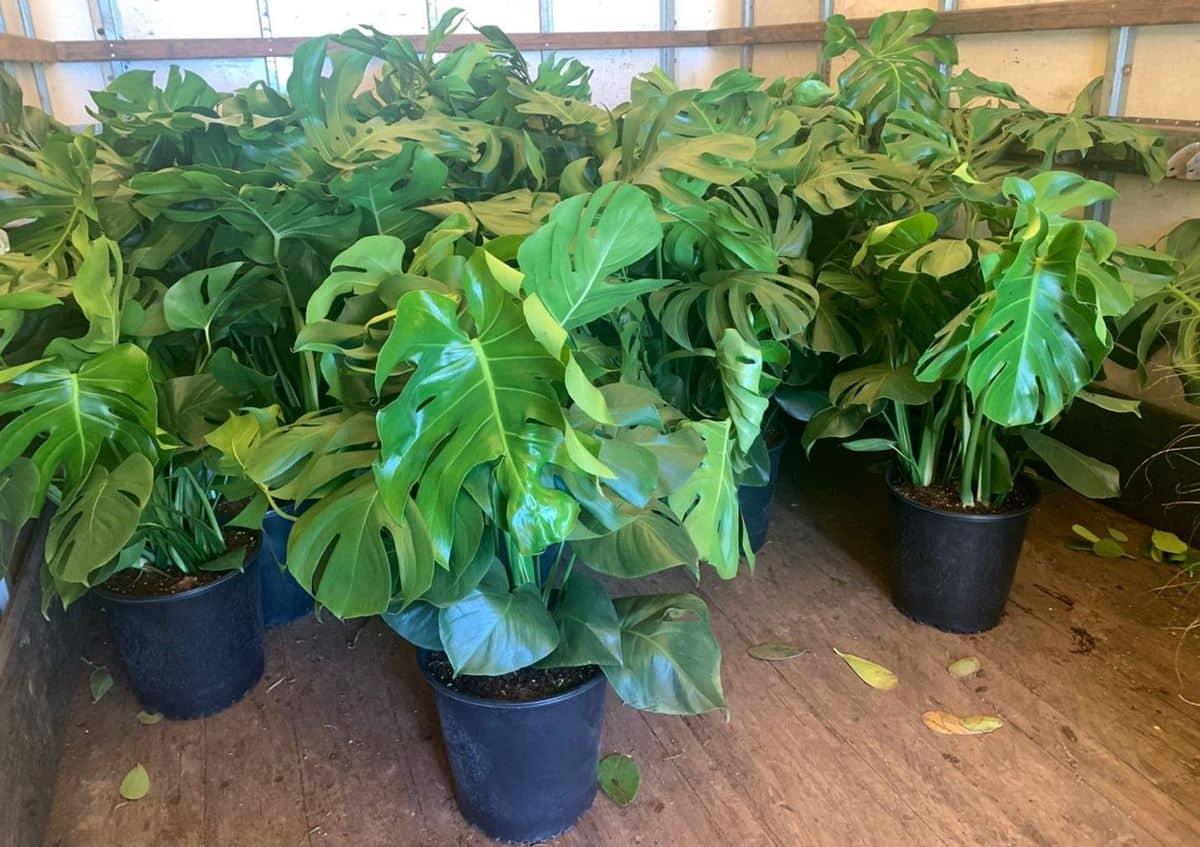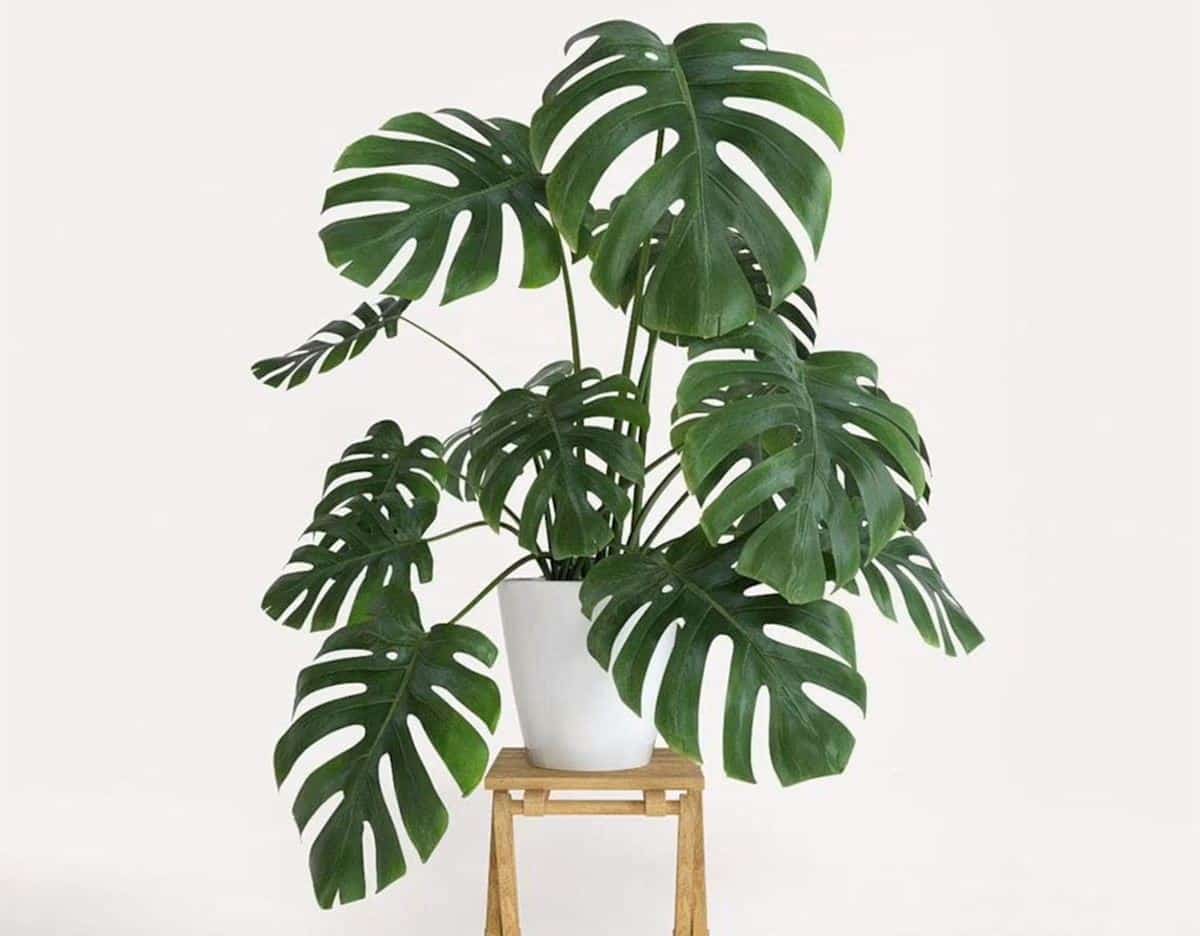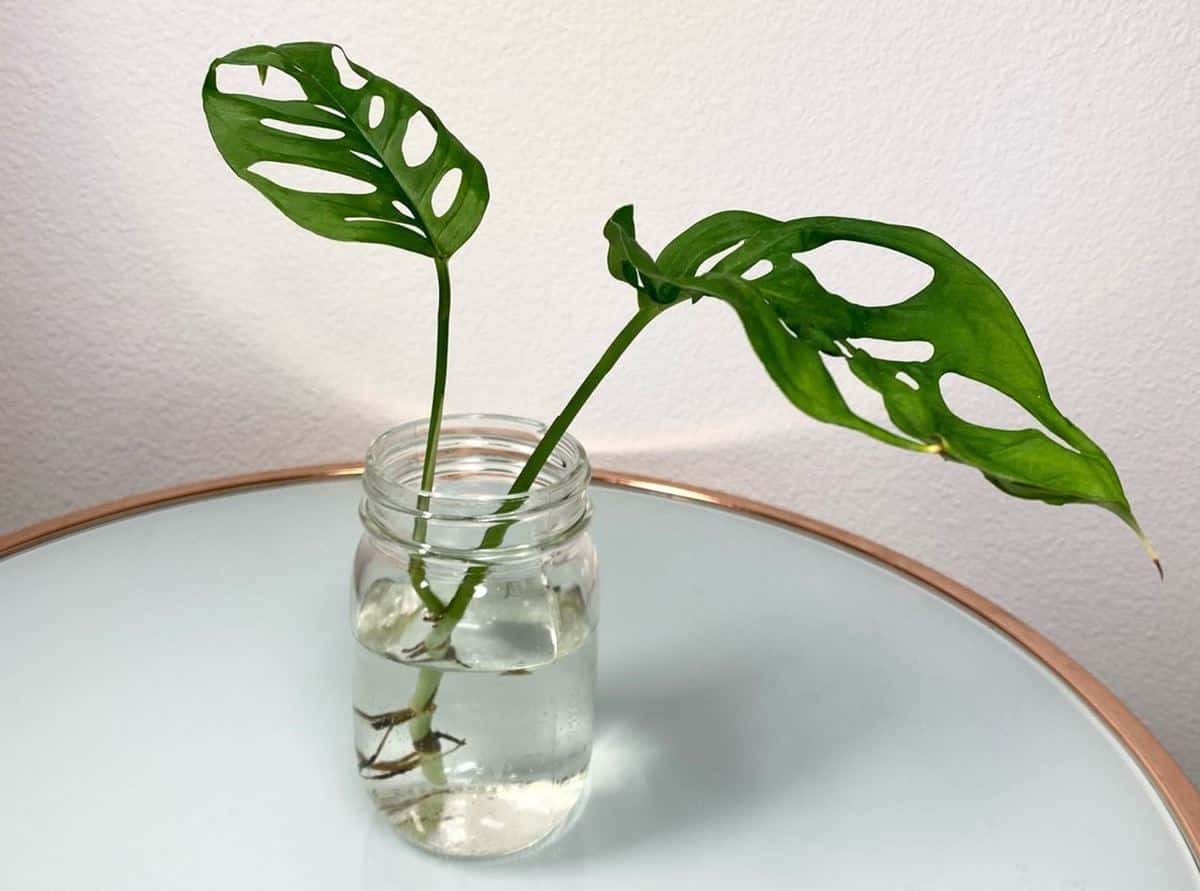Monstera
Monstera is a genus that belongs to the arum family Araceae with 45 accepted species. These plants are hemiepiphytes that spend part of their life cycle on other trees as epiphytes and grow in soil.
They get their name ‘Monstera’ from a Latin word ‘monstrous’ that means abnormal, to describe the usual leaves that some species have characterized by fenestrations or holes.
Monsteras are native to tropical regions of the Americas. Some species make excellent gardens and houseplants valued for their lovely foliage, including shingling ones Monstera acuminate and Monstera dubia
Identification - Appearance and description
Monsteras are evergreen perennial flowering vines and herbs with aerial roots for hooking to trees, branches, rocks, or any other vertical support. They grow relatively tall, with some growing as tall as 82 feet (25m).
Most of these species have big leathery green to dark to dull green adult leaves that may be pinnatifid, split, or perforated (with holes). Some species have juvenile leaves that look morphologically different.
Usually, when mature, Monsteras have flowers borne on a spadix. Also, these flowers have a spathe. Later, the spathe will bear berry-like clustered fruits that bear seeds
Toxicity
All monstera species are toxic to humans and pets because they have insoluble calcium oxalates. These sharp, needle-like oxalates known as raphides are associated with level 3 and 4 toxicity.
When chewed, the sharp raphides will embed on skin, tongue, mouth, lips, or throat, causing irritation and burning sensation. Other symptoms are:
- Redness and swelling of the mouth, lips, and tongue
- Mouth pawing in pets
- Difficulties in swallowing
- Anorexia or refusal to eat
- Stomach discomfort (rare)
- Breathing difficulties (infrequent)
Below are some of the best Monstera houseplants, where we have covered the following:
- Identification – appearance, and description- growing habits, leaves, stems, flowers, and fruits
- Where to grow them
- Care – USDA hardiness zone, temperature, light, humidity, soil, watering, fertilizer, pruning, and repotting
- Propagation
- Safety to pets and humans
- Pests
- Diseases and conditions
- FAQs
-
Monstera Esqueleto Care
-
Monstera Marmorata vs Aurea: What’s the big difference?
-
Monstera Borsigiana vs. Thai Constellation: Variegation, Color, and More!
-
Monstera Siltepecana vs. Peru: Which Climbing Plant Is Better?
-
14 Stunning Monstera Plant Species and Varieties to Buy and Prices
-
13 Lovely Variegated Monstera, Care, and Where to Buy
-
Monstera Aurea: 4 Adorable Yellow Monstera Variegata
-
Split-leaf Philodendron vs. Monstera deliciosa: Differences + Care
-
Monstera deliciosa (Swiss Cheese Plant) Guide
-
Monstera deliciosa Fruit Benefits, Taste and Where to Buy
-
Monstera deliciosa Care: Soil, Light, Watering, Repotting
-
Monstera deliciosa Propagation Ways: Swiss Cheese Plant
-
Monstera adansonii Varieties, Forms, and Care
-
Monstera Leaves Drooping Causes, Signs, and Fixes
-
Best Fertilizer for Monstera, When and How Often to Feed
-
The ultimate Monstera Laniata Care and Propagation Guide
-
Monstera lechleriana Care and Propagation
-
Baby Monstera Plant Care - Seedling Stage
-
Monstera Leaves Turning Yellow Causes and Fixes
-
Reasons for Monstera adansonii Yellow Leaves
-
Monstera Care: Growing and Caring for Monstera
-
Monstera Albo: Borsigiana, standleyana Variegata and Care
-
Best Soil for Monstera deliciosa, Adansonii, obliqua, etc.
-
Do Monsteras Like Humidity: Yes, 6 Ways to Raise It
-
When Do Monstera Split or Fenestrate?
-
How to Prune Monstera the Right Way
-
Monstera Brown Spots, Tips, Edges, or Browning Leaves
-
Monstera Leaves Turning Black or Having Black Spots
-
Ultimate Monstera Outdoors Care Guide
-
Monstera Leaf Care and Cleaning Tips for Lush leaves
-
Monstera Leaf: Real and Faux on Sale
-
Monstera Growth Stages: Baby, Mature, and Juvenile
-
Adult or Mature Monstera Stage: Care + Appearance
-
How Fast Do Monstera Grow: Monstera Growth Rate
-
Monstera vs. Philodendron: Differences and Care Needs
-
Should I Buy a Leafless Monstera Node?
-
Repotting Monstera: How and When to Repot Monstera
-
Monstera Light Needs: What Kind and How Much
-
Monstera Sunburn Signs and What to Do
-
How to propagate Monstera: Stem Cutting, Seeds, Air Layering


